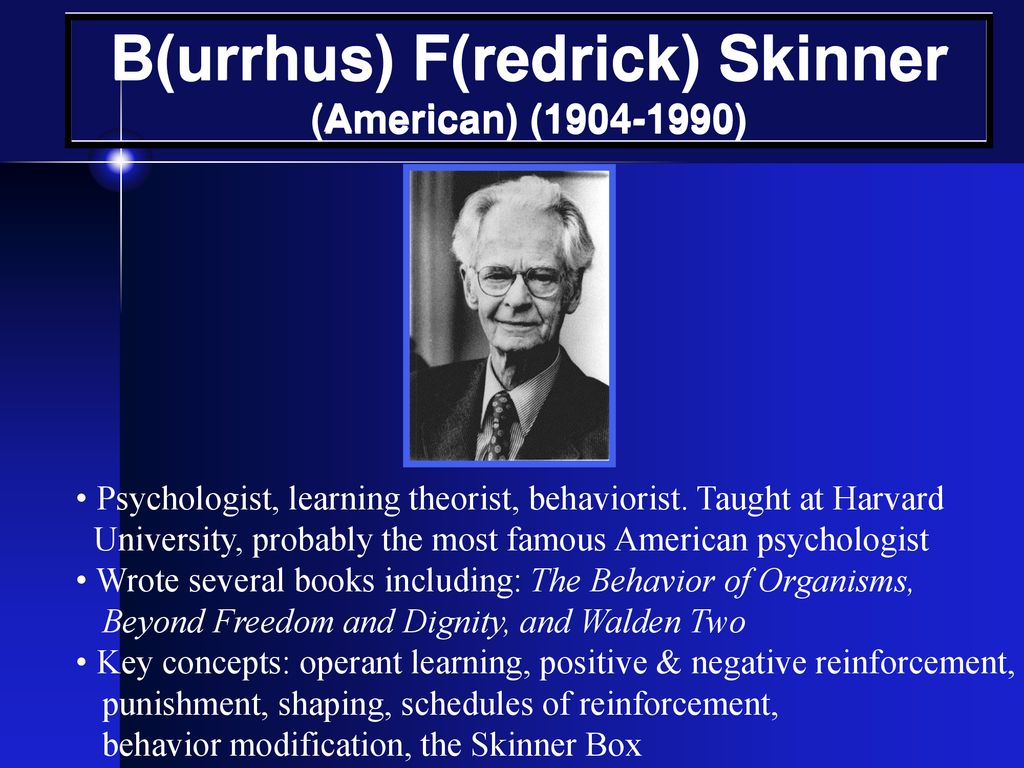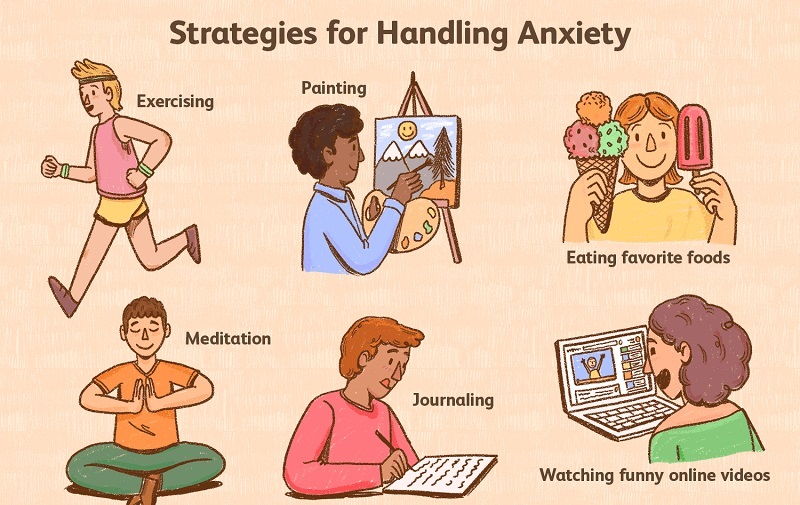Famous behavioral psychologists
4 Behavioral Theorists That Made Their Mark On Psychology
Behavioralism also referred to as behavioral psychology, is a school of thought that revolves around the idea that human and animal behaviors are conditioned, meaning that they can be learned and reinforced through exposure. In this article, you will learn about the most important individuals who helped shape this field of psychology.
Behavioral Theorists Offer Treatments For Mental Health Clients Find The Right Treatment For You
John Broadus Watson
John B. Watson was a U.S. psychologist who is regarded as the father of behavioralism because of his publication from 1913, Psychology as the Behaviorist Views it. It is now considered a classic piece of literature in psychology, along with subsequent works.
In this paper, he believed that because psychology is the science of human behavior, it should be studied in a laboratory, just like how animals are often observed. [1]
Following this, he published An Introduction to Comparative Psychology, in 1914, where he advocated the use of animals in studies and believed that conditioned responses were the most optimal technique. However, in 1918, he would become interested in studying infants and their behavior, which led to another one of Watson's most famous contributions to psychology. [1]
In 1920, Dr. Watson would lead a psychological experiment on an 11-month old infant boy referred to as “Little Albert.” Little Albert was the ideal subject for this experiment because he was stable and not very emotional. [2]
Watson hypothesized that the fear of animals could be conditioned by performing a specific set of stimuli. When presented with a white rat, the doctors would strike a steel bar that would produce a loud noise. Over time, Albert became conditioned to fear the rat because of the sound associated with it, and this would be one of the prime examples of classical conditioning.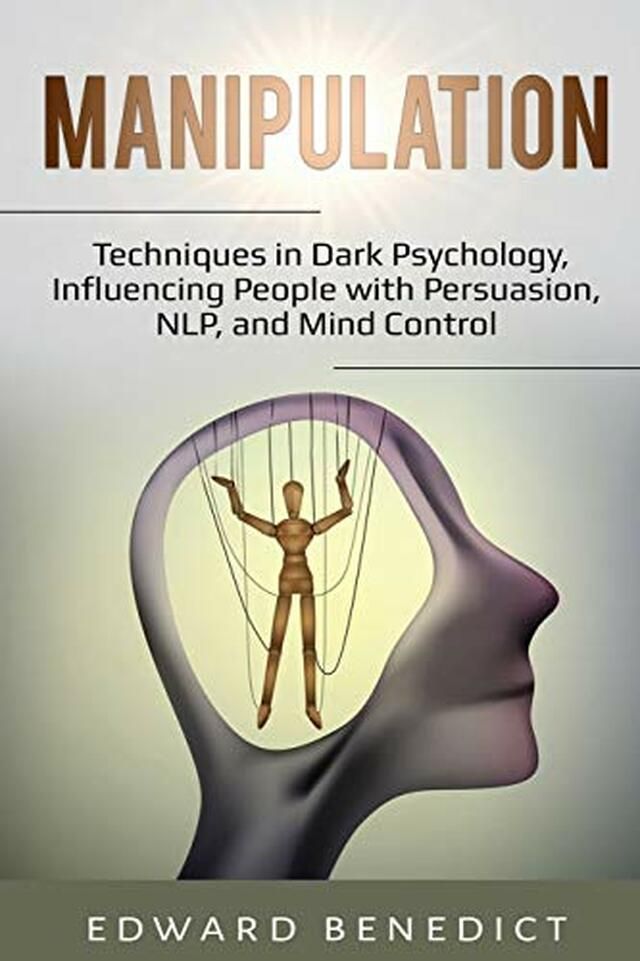
However, this study also demonstrated that conditioned fears could be transferable. Not only did Albert fear the white rat but also displayed the same negative reactions toward other animals and even inanimate objects, like fur coats. [2]
Although John B. Watson and the Little Albert experiment has provided us great insights in regard to human behavior, it is also considered controversial by many people. This study effectively demonstrated how the mind could be manipulated to feel a certain way about things.Because of the subject and the nature of the study, purposely making a living being afraid by conditioning them to stimuli, has been considered unethical by people who have reviewed this case.
Ivan Petrovich Pavlov
Unlike John B. Watson, Ivan Pavlov was not a trained psychologist. He was interested in the same ideas as Watson and would also produce his own famous experiments related to classical conditioning. Pavlov would become one of the most prominent behavioral theorists in the field.
Dr. Pavlov was a Russian physiologist who was highlytrained in working with the cardiovascular system and finding ways to manage blood pressure. His skills allowed him to put a catheter into a dog painfree, without anesthesia. He was able to note the effects of pharmacological and emotional stimuli on the dog's blood pressure by making careful dissections on its cardiac nerves. [3]
Although his earlier work does not relate to psychology, this experience, in particular, would lead to future work with animals.
Pavlov is best known for his experiments with dogs and salivation. Initially, he believed that the animals would salivate when being presented with food; however, he noticed that this would occur only when the dogs heard his lab assistant approaching. [4]
This realization led to his theory that the animals' behavior toward food is a learned response to a specific stimulus, which would be known as a conditioned reflex and later, Pavlovian psychology.
In Pavlov's famous experiment, food was an unconditioned stimulus, and salivation was the unconditioned response. He would choose to use a metronome as a neutral stimulus, which by itself, did not cause a response with the dogs.
He would choose to use a metronome as a neutral stimulus, which by itself, did not cause a response with the dogs.
Following this, Dr. Pavlov would begin his conditioning procedure, and just before delivering food to the dogs, he would let the metronome click. After a series of trials, the sound of the metronome would cause the dogs to produce more saliva because it led them to believe that food would be arriving shortly.
This means that the metronome became a conditioned stimulus, and salivation became the conditioned response. According to Pavlov, for this to work, the new stimulus must be presented in a close enough timespan; otherwise, the subjects would not learn to associate the stimulus with the possibility of food. His discovery was groundbreaking and would provide the framework for classical conditioning, which would later be expanded on by John B. Watson. [4]
Edward Lee Thorndike
Another one of the most influential behavioral theorists of all time is Edward L.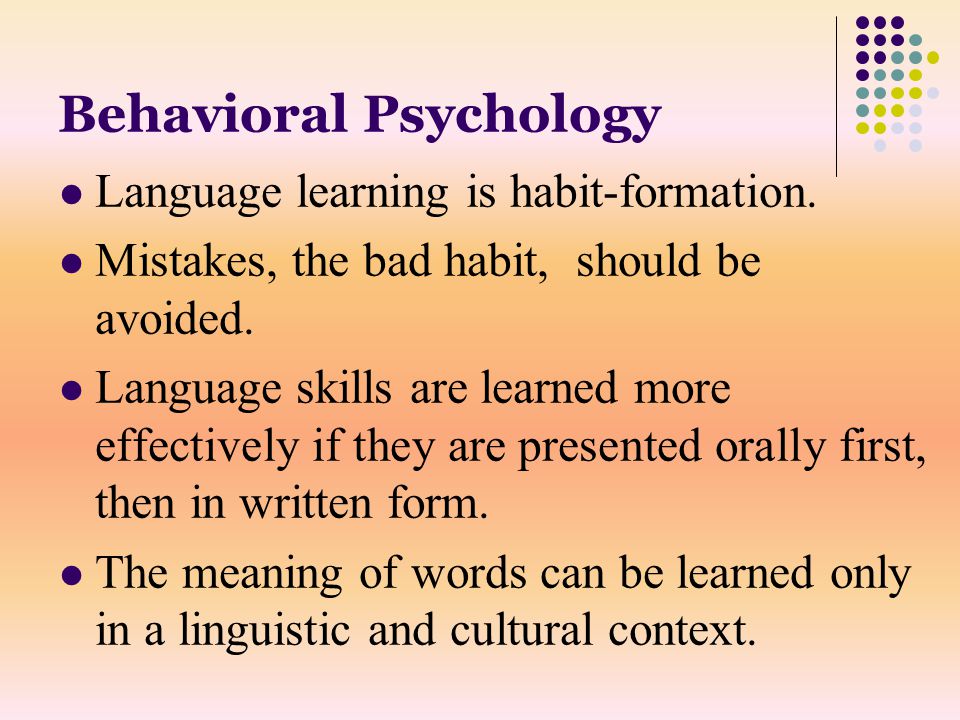 Thorndike. Dr. Thorndike was a psychologist who primarily worked with animals. He is also responsible for creating the Law of Effect and developing what would be later known as operant conditioning.
Thorndike. Dr. Thorndike was a psychologist who primarily worked with animals. He is also responsible for creating the Law of Effect and developing what would be later known as operant conditioning.
Thorndike's Law of Effect proposes that "responses that produce a satisfying effect in a particular situation become more likely to occur again in that situation, and responses that produce a discomforting effect become less likely to occur again in that situation." [5]
He would perform most of his studies on cats. To test his learning theory, he would create a puzzle box for them that involved ways to escape and a piece of fish outside of the enclosure.
Using the fish gave the cats an incentive to try to find a way to escape from the puzzle box.
Behavioral Theorists Offer Treatments For Mental Health Clients
Find The Right Treatment For You
The cats would find a lever, which would open the box. Once they obtained the fish, they were put back into it, and once again, Dr.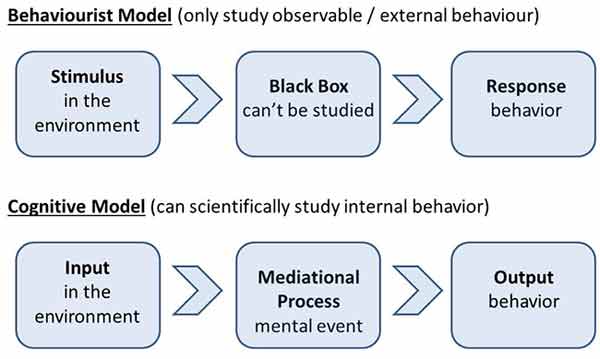 Thorndike would take note of how long it took for them to escape. Eventually, because the cats learned that pressing the lever had positive outcomes, they would keep doing it and would become much quicker at doing so. This phenomenon would become known as reinforcement.
Thorndike would take note of how long it took for them to escape. Eventually, because the cats learned that pressing the lever had positive outcomes, they would keep doing it and would become much quicker at doing so. This phenomenon would become known as reinforcement.
Although Thorndike is best known for his Law of Effect, he is also credited for coming up with additional learning theories that were based on connectionism. Two major concepts he formalized, but not usually associated with behavioralism, are the Law of Exercise and the Law of Readiness.
The Law of Exercise states that "mere repetition of a response in a situation could also strengthen a bond." [6] Essentially, through practicing learning drills, people can become more efficient. The Law of Readiness proposes that people learn best when they are mentally prepared to. However, if they are not, individuals will have suboptimal learning because they do not see a reason to learn.
Burrhus Frederic Skinner
The U. S. psychologist, B. F. Skinner, was highly influenced by John. B. Watson's work and his concept of behavioralism. He was dismissive of the psychoanalytic contributions of Sigmund Freud and Carl Jung. Skinner believed that instead of any psychological explanation for a person's mental state as well as their beliefs, desires, and memories, all humans and animals and their behaviors were dictated by their environment. [6]
S. psychologist, B. F. Skinner, was highly influenced by John. B. Watson's work and his concept of behavioralism. He was dismissive of the psychoanalytic contributions of Sigmund Freud and Carl Jung. Skinner believed that instead of any psychological explanation for a person's mental state as well as their beliefs, desires, and memories, all humans and animals and their behaviors were dictated by their environment. [6]
Skinner felt that the goal of psychology, as a science, was to be able to predict and control behaviors, and to reflect this, he wrote two books. One is the fictional utopian novel, Walden Two, and another one was the successful book, Beyond Freedom and Dignity. Here, he felt that the future of humanity should discard concepts, such as freedom and dignity, basically implying that free will is a myth. [6]
Though these ideas may seem radical to many people, Skinner is famous for his work on operant conditioning and the Law of Effect. Although these behavioral and learning concepts were previously created by Edward L. Thorndike, it was B. F. Skinner that gave operant conditioning its name and developed it further.
Thorndike, it was B. F. Skinner that gave operant conditioning its name and developed it further.
Operant conditioning is a process in which behaviors can be learned from reinforcement and punishment, and the person or animal will make an association between the behavior and its outcome.
His work would refine the earlier concepts that were developed by Thorndike, and he would also be influenced by his methodology as well. Like Thorndike, Skinner would perform different studies on animals, especially rats and pigeons, and would become the inventor of the Skinner Box.
The Skinner Box has many similarities as the puzzle one that Thorndike came up with for his experiments. The difference is that Skinner's would also include negative reinforcement, whereas Thorndike's only looked at the positive.
This invention would have a lever system for the rats, and the pigeons would work by key-pecking. This box would also have an electrical current running through it that would produce a shock which was the punishment.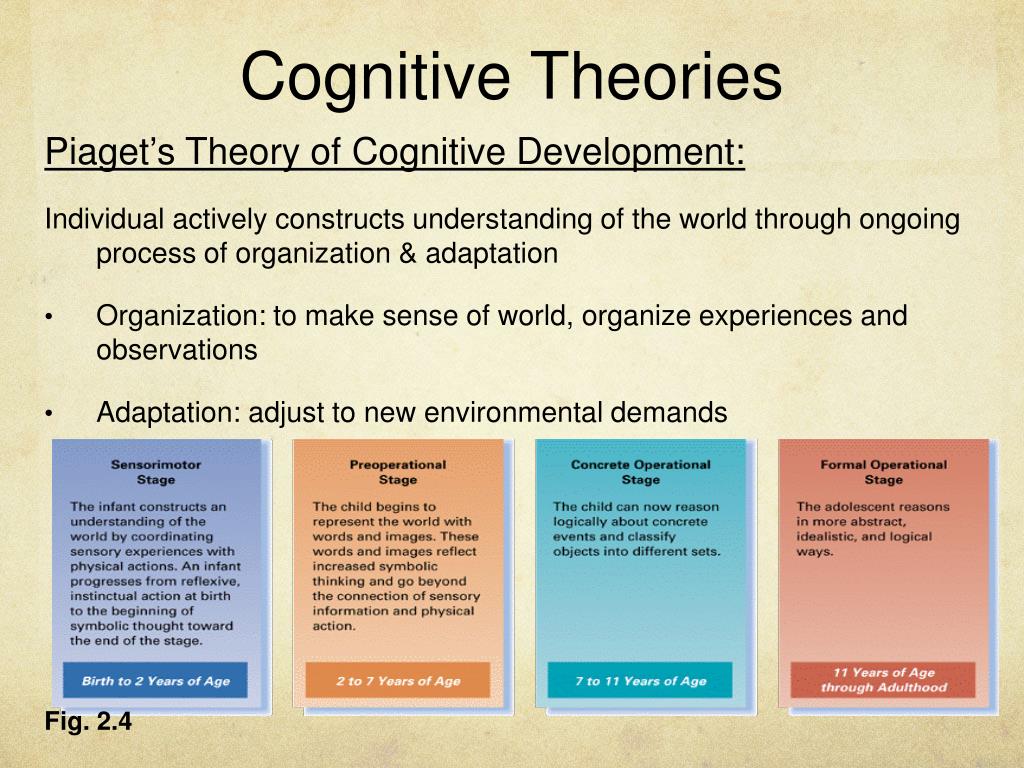 For example, in the case of the rats, they would eventually learn that hitting a lever would turn off the current. Over time, they would immediately look for the lever after being placed in the box to escape the electrical current. [7]
For example, in the case of the rats, they would eventually learn that hitting a lever would turn off the current. Over time, they would immediately look for the lever after being placed in the box to escape the electrical current. [7]
Skinner was able to teach his rats to associate a light with the electrical current. A light was turned on just before switching on the current, so when the light was produced, the rats would go straight for the lever to turn off the electricity. [7] This experiment is similar to Pavlov's as Skinner trained his rats to have a conditioned stimulus and response and confirms that all behaviors can be programmed.
Conclusion
Up until the 1950s, behavioralism was the paradigm in psychology. Just like how behavioralism became more favorable than its predecessors, it would decline in popularity. Humanistic psychology would eventually take its place as the dominant school of thought in psychology.
Despite this, there are still many takeaways from behavioralism, and its findings are still relevant.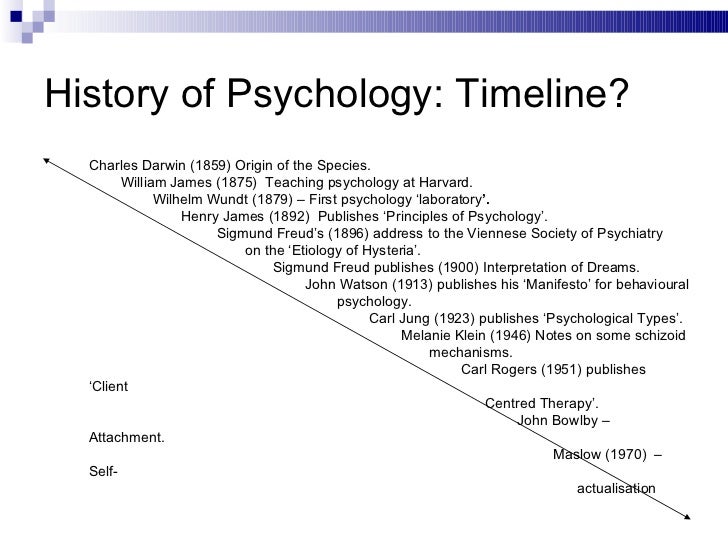 Behavioral training is still used today, and therapies that aim to change people's thoughts and responses, like cognitive behavioral therapy, are used to help millions of people.
Behavioral training is still used today, and therapies that aim to change people's thoughts and responses, like cognitive behavioral therapy, are used to help millions of people.
Changing Your Behavior
If you have any behaviors that you haven’t been able to change on your own, consider talking with an in-person or online therapist. A therapist can teach you techniques for you to implement outside of therapy. You will then report back to the therapist about how successful the techniques were.The both of you can then discuss what modifications, if any, need to be made. This is a practical way to safely change behavior under the guidance of a professional.
Evidence has shown that online therapy has been proven to be slightly better than face-to-face therapy regarding cognitivebehavioral treatment (CBT). In a literature review of 17 studies on the effectiveness of online CBT or eCBT when contrasted with traditional therapy, it was found that eCBT was better at reducing the symptoms of depression.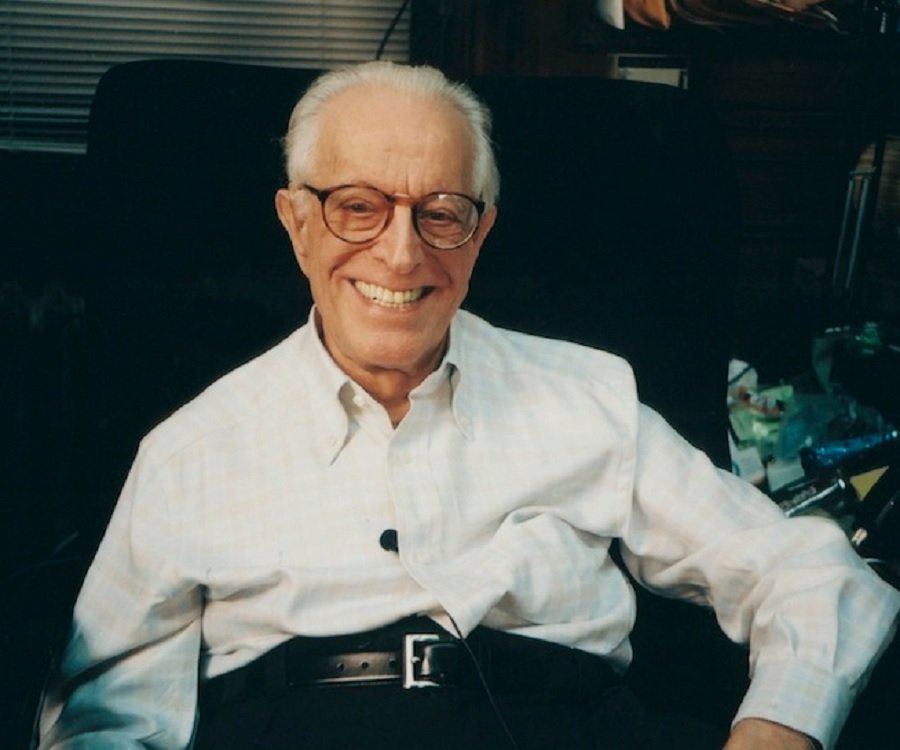 It was also noted that eCBT could be less expensive than face-to-face therapy. Online therapy for CBT can also be used effectively for other mental health conditions. People with PTSD, eating disorders, and anxiety have found relief through this type of treatment.
It was also noted that eCBT could be less expensive than face-to-face therapy. Online therapy for CBT can also be used effectively for other mental health conditions. People with PTSD, eating disorders, and anxiety have found relief through this type of treatment.
How BetterHelp Can Support You
To learn more about psychology and its many topics, BetterHelp offers many educational articles like this one, in addition to its online therapy services. Our licensed counselors and therapists can help you change or modify behavior that you find affecting your daily life. With their expertise and experience, you’ll be able to recognize how thoughts and then feelings could be leading to the undesired behavior you want to change. If you are interested in online therapy, you can get started with BetterHelp anywhere you have an internet connection and a smartphone, tablet, or computer. You will also meet with a therapist at a time that’s most convenient for you. Read below for some reviews of BetterHelp counselors from people experiencing similar issues.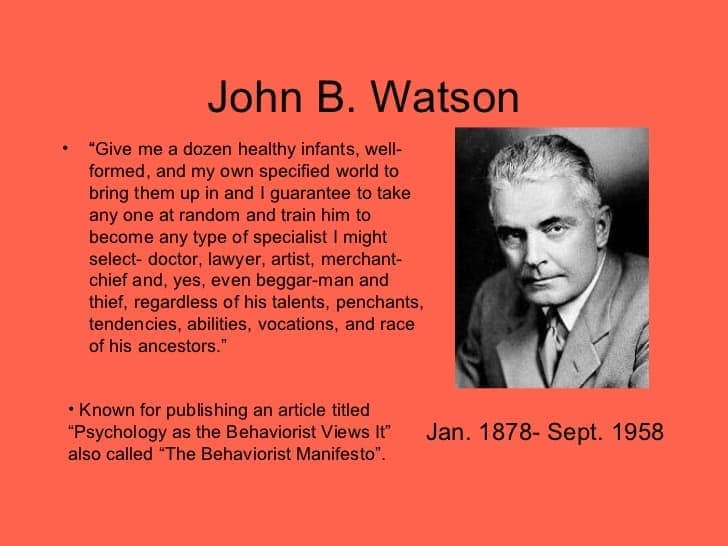
Counselor Reviews
“Counseling is a new experience for me. I have really appreciated the time learning about myself thru the lens of exploring who I am and what is at the core of my behavior and decision making. Jarbriel has been constrictive in helping me see the good in me and my challenges. She helps me dig and then guides me with constructive assignments to reframe my thinking around my problems to find solutions. Best part is I feel like I'm talking to a human being that actually experiences life.”
“Terry is fantastic. Full stop. She is kind, listens when you need to vent and recognizes patterns in behavior that I was oblivious to for years. I'd highly recommend Terry.”
References
- Britannica, T. E. (2019, January 05). John B. Watson. Retrieved June 23, 2019, from https://www.britannica.com/biography/John-B-Watson
- Watson, J. B., & Watson, R. R. (1920). Conditioned Emotional Reactions. Readings in General Psychology.
 , 3(1), 111-119. DOI:10.1037/11352-020
, 3(1), 111-119. DOI:10.1037/11352-020 - Gantt, W. H. (2019, March 18). Ivan Pavlov. Retrieved June 23, 2019, from https://www.britannica.com/biography/Ivan-Pavlov
- McLeod, S. A. (2018, October 08). Pavlov's dogs. Retrieved June 23, 2019, from https://www.simplypsychology.org/pavlov.html
- McLeod, S. A. (2018, January 14) Edward Thorndike: The Law of Effect. Retrieved June 23, 2019, from https://www.simplypsychology.org/edward-thorndike.html
- Harvard Dept. Of Psychology. (n.d.). B. F. Skinner (1904-1990). Retrieved June 23, 2019, fromhttps://psychology.fas.harvard.edu/people/b-f-skinner
- McLeod, S. A. (2018, January 21). Skinner - operant conditioning. Retrieved June 23, 2019, from https://www.simplypsychology.org/operant-conditioning.html
Most Famous Psychologists - List of Famous Psychologists in History
The field of psychology is one that combines many disciplines. It is one of the few sciences that combine a person’s biology, the human chemistry and other aspects to determine why a person behaves the way they do.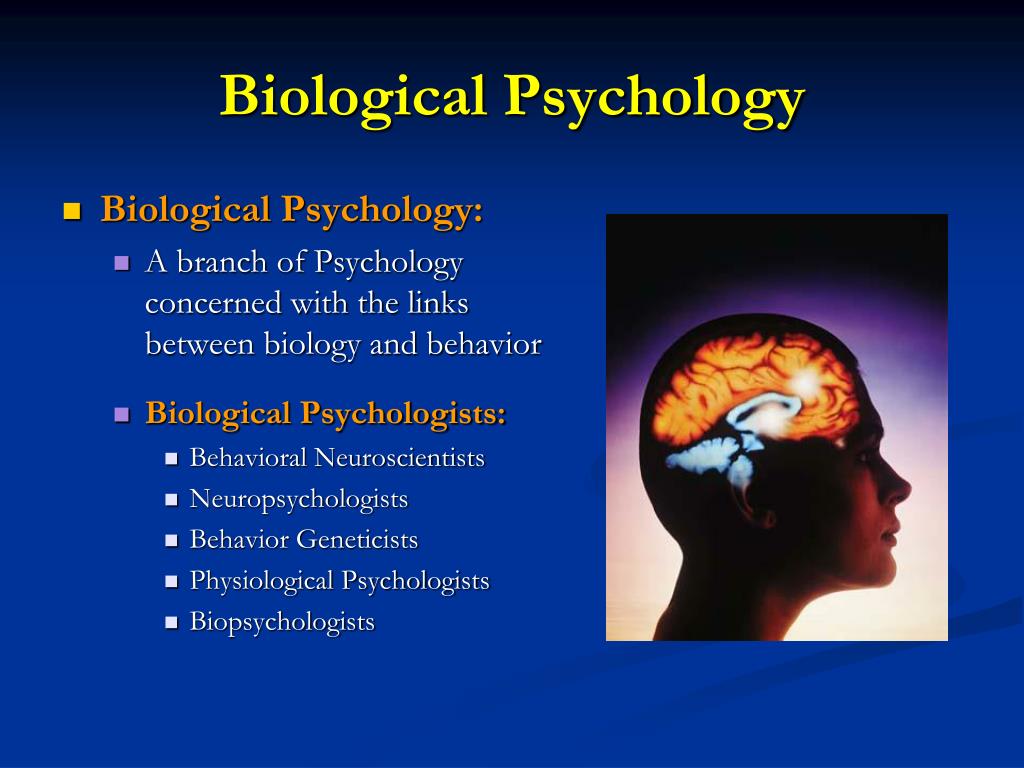 Psychologists through the years have brought their individual ideas and theories to the field and have given us several ideas about what affects human behavior and how to understand it better. Here are some of the most famous psychologists that have made contributions to this important field.
Psychologists through the years have brought their individual ideas and theories to the field and have given us several ideas about what affects human behavior and how to understand it better. Here are some of the most famous psychologists that have made contributions to this important field.
| Wilhelm Wundt (1832-1920) Nationality: German Known for: A founding father of modern psychology While he is regarded by many as the “father of experimental psychology,” Wundt founded the first formal laboratory at the University of Leipzig dedicated to doing psychological research. He is also credited with being the person who separated the field of psychology from other sciences like philosophy and biology. | William James(1842-1910) Nationality: American Known for: Pragmatic theory of truth His theory of pragmatism stated that it is impossible to prove an idea’s truth. 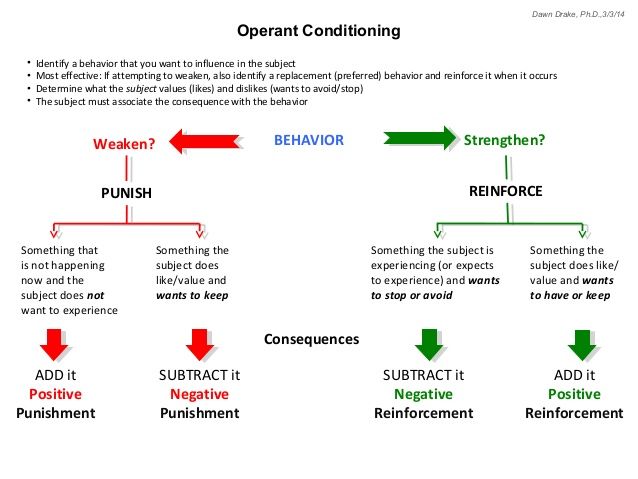 Therefore, it should be evaluated on its usefulness. He also believed in an idea he called “functionalism,” which takes into account an entire event instead of just individual parts of it. Therefore, it should be evaluated on its usefulness. He also believed in an idea he called “functionalism,” which takes into account an entire event instead of just individual parts of it. | Ivan Pavlov (1849-1936) Nationality: Russian Known for: Developed the concept of the conditioned reflex Known for his “Pavlov’s Dog” experiment, Ivan Pavlov discovered that dogs would begin to salivate when they thought they were going to get food. His findings gained approval among his peers and even in culture as the idea was used in Huxley’s “Brave New World” and other works. |
| Sigmund Freud (1856-1939) Nationality: Austrian Known for: The father of psychoanalysis Freud was one of the innovators in the field of psychology. He played a major role in the field’s development and many of his ideas are controversial and not widely accepted. 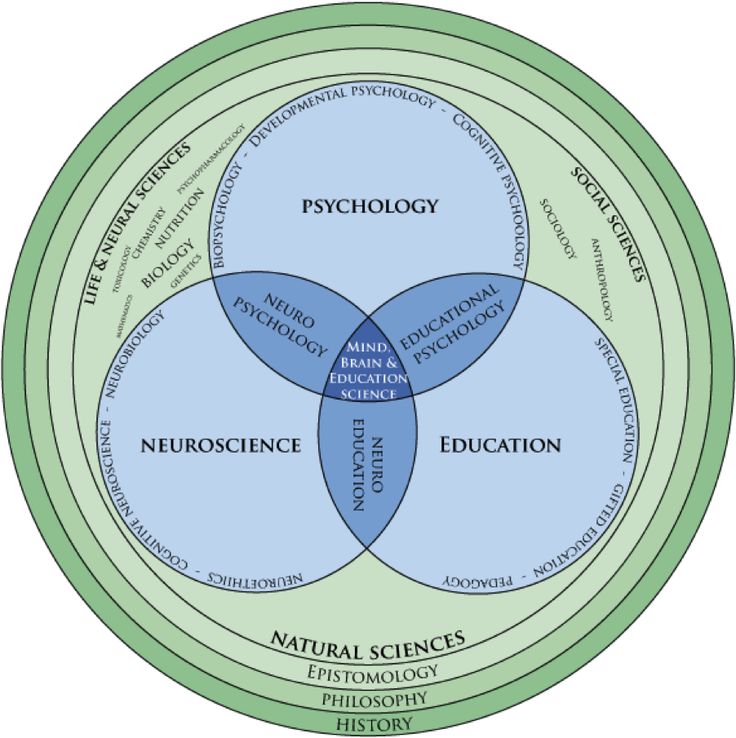 He thought that many psychological issues that people have could be traced back to their sexual development. He thought that many psychological issues that people have could be traced back to their sexual development. | Alfred Binet (1857-1901) Nationality: French Known for: Invented the Binet-Simon scale The Binet-Simon scale was the first accepted intelligence test used in schools to help determine which students needed extra help with learning the curriculum. The test was based on a variety of tasks created by Binet and Simon that were relevant to a child’s ability at various stages in life. | Alfred Adler (1870-1937) Nationality: Austrian Known for: Founded the school of individual psychology Adler is credited with several concepts in the field of psychology. For one thing, he disagreed with Freud’s idea that a patient and psychologist should face away from each other. He felt they should face each other. He also believed that the personality strives for wholeness and a balance with society.  |
| Carl Jung (1875-1961) Nationality: Swiss Known for: Founder of analytical psychology Carl Jung is known for several things related to the field of psychology, including dream analysis, his theory of the collective unconscious, and the archetype. He also studied the traits of introverts and extroverts. Jung also indirectly helped form Alcoholics Anonymous. | John B. Watson (1878-1958) Nationality: American Known for: Developed the idea of behavior psychology, or behaviorism Watson explored the ideas of how behaviorism affected how children are raised best, advertising strategies, and animal behavior. He is well-known for his “Little Albert” experiment in which he studied the behavior of children to find support for his theory that they react with fear when they hear a loud noise.  | Melanie Klein (1882-1960) Nationality: Austrian Known for: Specialized in therapeutic techniques involved in child psychology Klein had an impact on developmental psychology in that she created a “play therapy” idea that is still used with children today. She also placed an emphasis on the relationship between a mother and child and how it affected the development of the child as they grew. |
| Sabina Spielrein (1885-1942) Nationality: Russian Known for: Helped influence the field of psychoanalysis Spielrein, who was one of the first psychoanalysts to be female, impacted the field with her essay entitled Destruction as the Cause of Coming into Being, which she wrote in 1912. One of her beliefs was that the sexual drive had an aspect of transformation and destruction. 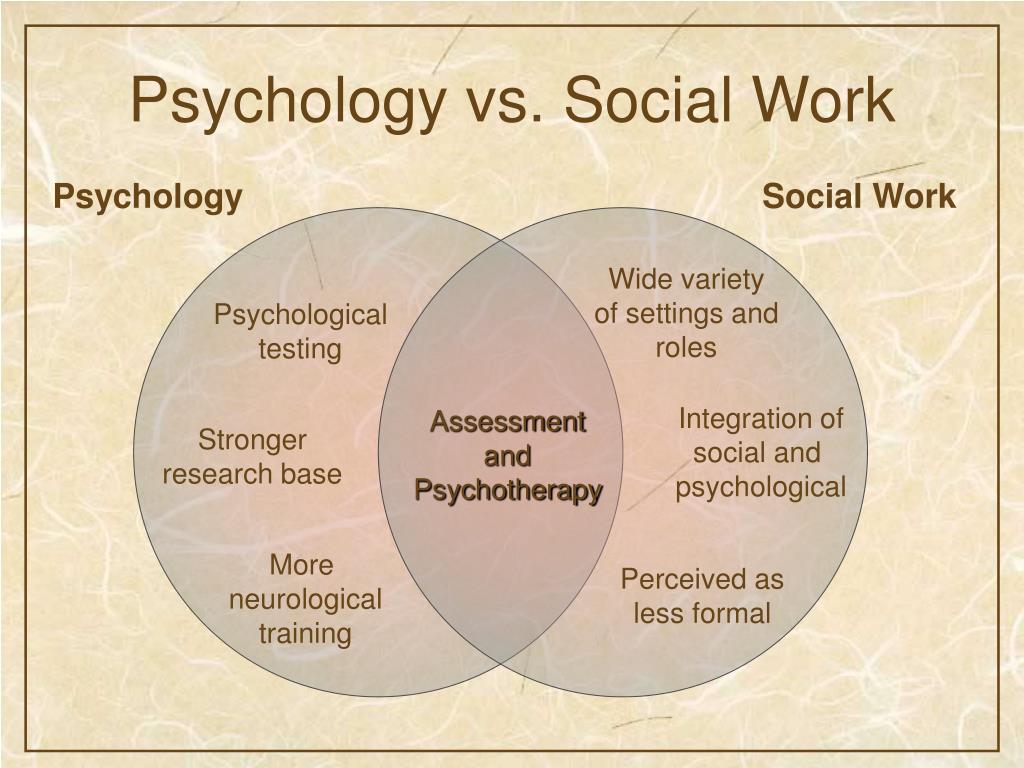 | Karen Horney (1885-1952) Nationality: German Known for: Founder of feminist psychology Horney formulated the theory of neurotic needs, which explained that a person’s neurosis was a direct result of the anxiety they have in their personal relationships. The needs she explores fall into three categories – those that move you towards others, away from others, and against others. | Kurt Lewin (1890-1947) Nationality: German-American Known for: Founder of social psychology Lewin was one of the first psychologists to study group dynamics, which explores how people behave and think while they are in a group situation. He also specialized in studying organizational development, which deals with companies and making their organization more efficient and effective. |
| Fritz Perls (1893-1970) Nationality: German-Jewish Known for: Coined the phrase “Gestalt therapy” Along with is wife, Laura Perls, Fritz developed a form of psychotherapy that came to be known as “Gestalt therapy. 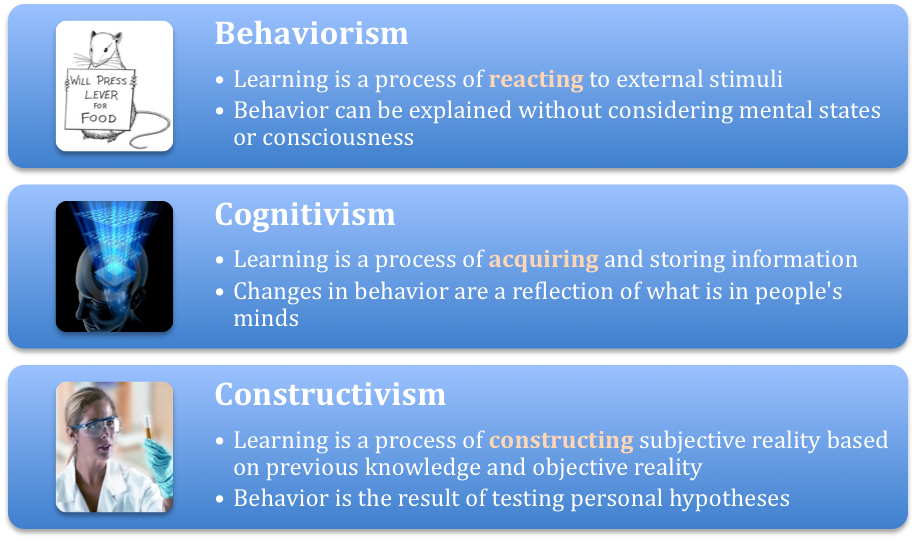 ” This type of therapy included enhanced perception, bodily feelings, behaviors and emotions. It also emphasized evaluating experiences at the current moment and personal responsibility. ” This type of therapy included enhanced perception, bodily feelings, behaviors and emotions. It also emphasized evaluating experiences at the current moment and personal responsibility. | Anna Freud (1895-1982) Nationality: Austrian Known for: Co-founder of psychoanalytic child psychology As Sigmund Freud’s last child, Anna Freud made a name for herself in the field of psychology. She studied psychoanalytic topics like daydreaming, child development and more. She studied how adolescents develop into adulthood and she received great praise for the papers she wrote, specifically “About Losing and Being Lost.” | Jean Piaget (1896-1980) Nationality: Swiss Known for: Formulating the theory of cognitive development Piaget worked closely with children to study their thought processes and how they differed from adults. He also contributed to the field of developmental psychology and many of his theories and ideas are still relevant today.  |
| Lev Vygotsky (1896-1934) Nationality: Soviet Belarusian Known for: Founder of the theory of cultural-historical psychology As a Russian psychologist, much of Vygotsky’s works were criticized and oppressed by the Communists. This left many of his idea inaccessible for the Western world to study. But he was heavily influential in the field of educational psychology and many of his ideas are still being studied today. | Erich Fromm (1900-1980) Nationality: German Known for: Society’s effects on the human psyche Fromm published works that dealt with political psychology and his theory on the human character. His main idea was the freedom most important aspect of human nature. He also categorized three ways that humans use to escape from freedom, including destructiveness, authoritarianism, and automaton conformity. 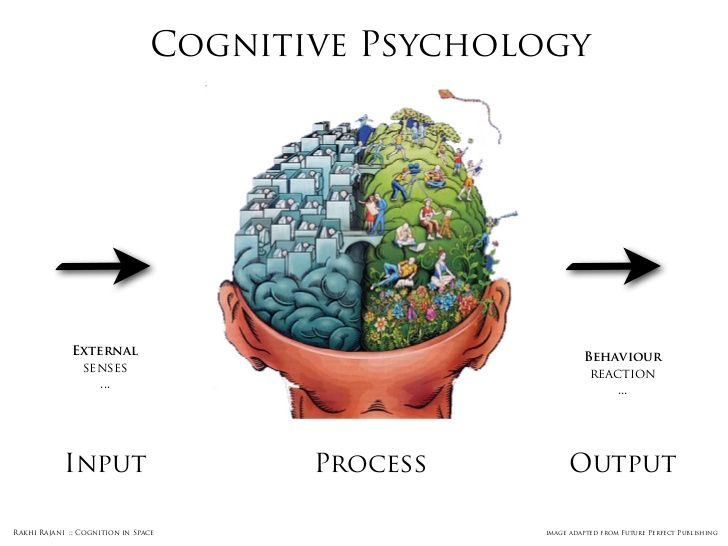 | Jacques Lacan (1901-1981) Nationality: French Known for: Formulated the “mirror stage” of psychoanalysis Lacan’s “mirror stage” is a point in the life of a person’s development in which they are at a turning point. It also signifies a strong relationship with their body image. Lacah is also known for theorizing the “three orders,” which include the imaginary, the symbolic, and the real. |
| Milton Erickson (1901-1980) Nationality: American Known for: Founder of the American Society for Clinical Hypnosis Erickson specialized in the fields of family therapy and medical hypnosis. He also studied and experimented with trances and the unconscious mind. His work in hypnosis was controversial during his time period and still is today. | Carl Rogers (1902-1987) Nationality: American Known for: Co-founder of the humanistic approach Rogers was interested in the human potential.  He based much of his theoretical work on Abraham Maslow, but he added that a person needs certain needs and conditions met, such as empathy and genuineness, before they can actually grow. He also believed that self-actualization must take place in order for a person to reach their full potential. He based much of his theoretical work on Abraham Maslow, but he added that a person needs certain needs and conditions met, such as empathy and genuineness, before they can actually grow. He also believed that self-actualization must take place in order for a person to reach their full potential. | Erik Erikson (1902-1994) Nationality: German-American Known for: Formulated the theory of psychosocial development Influenced heavily by Freud, Erikson believed in stages of development throughout life. But he put more emphasis on a person’s culture and environment rather than their sexual development in forming the personality. His psychosocial theory included ideas like fostering a sense of identity, trusting others, and more. |
| B. F. Skinner (1904-1990) Nationality: American Known for: Formulated the idea of radical behaviorism Skinner is known for many things, but his two main ideas are operant conditioning and negative reinforcement.  With his research in operant conditioning, he found that behavior depended more on what happened after a response rather than what happened before it. He also published more than 20 books and 200 articles on the topic of psychology. With his research in operant conditioning, he found that behavior depended more on what happened after a response rather than what happened before it. He also published more than 20 books and 200 articles on the topic of psychology. | Viktor Frankl (1905-1997) Nationality: Austrian Known for: Developed the idea of logotherapy Frankl believed that humans are motivated by the search for the meaning of life. He believed that any efforts through psychotherapy should focus on that motivation. He also published Man’s Search for Meaning, which became a major bestseller and told of his life in a German concentration camp. | John Bowlby (1907-1990) Nationality: British Known for: Conducted work in attachment theory The attachment theory idea concerns how humans interact throughout long-term relationships. At the base of this theory is the idea that an infant must develop a relationship with one or more primary caregivers for normal emotional and social development. 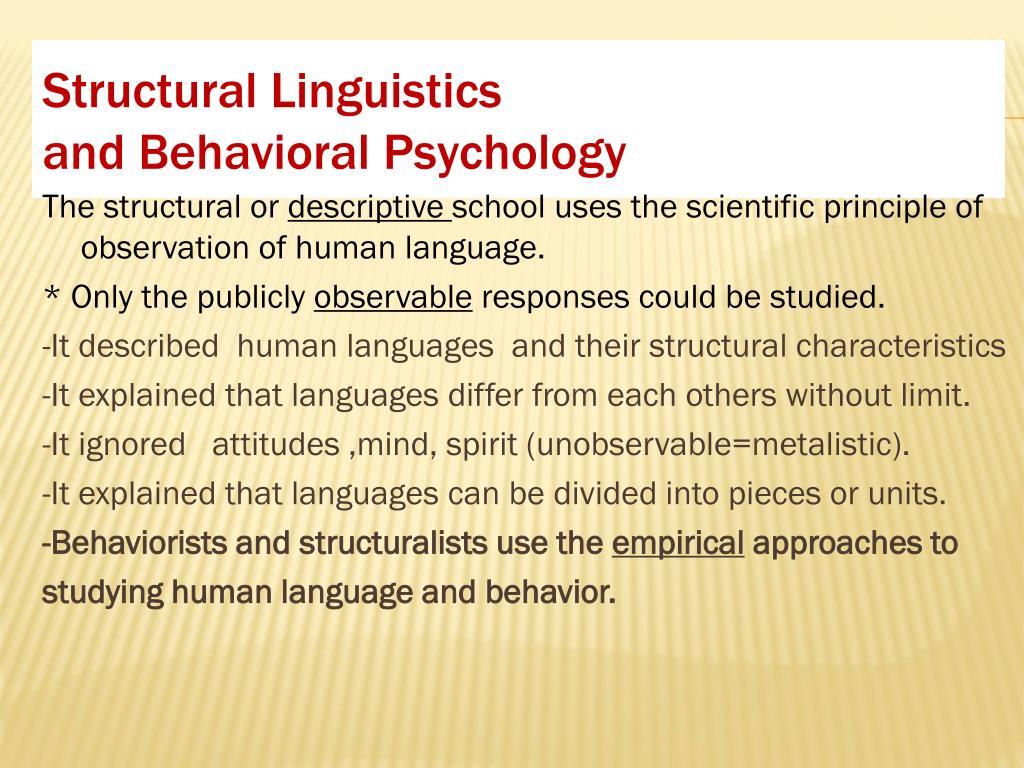 |
| Abraham Maslow (1908-1970) Nationality: American Known for: Maslow’s hierarchy of needs One of Maslow’s fundamental theories was that humans are motivated by needs. As a result, their actions are designed with a certain end result in mind. His idea of a hierarchy of needs stated that humans need to fulfill certain needs before they can move on to fulfill another need. | Albert Ellis (1913-2007) Nationality: American Known for: Developed the Rational Emotive Behavior Therapy Ellis is one of the main pioneers in the cognitive revolutionary paradigm shift in th field of psychotherapy. He also founded the cognitive-behavioral therapies, which is a therapeutic approach that deals with dysfunctional behaviors and emotions with goal-oriented procedures. He is also considered one of the top three influential psychotherapists ever. 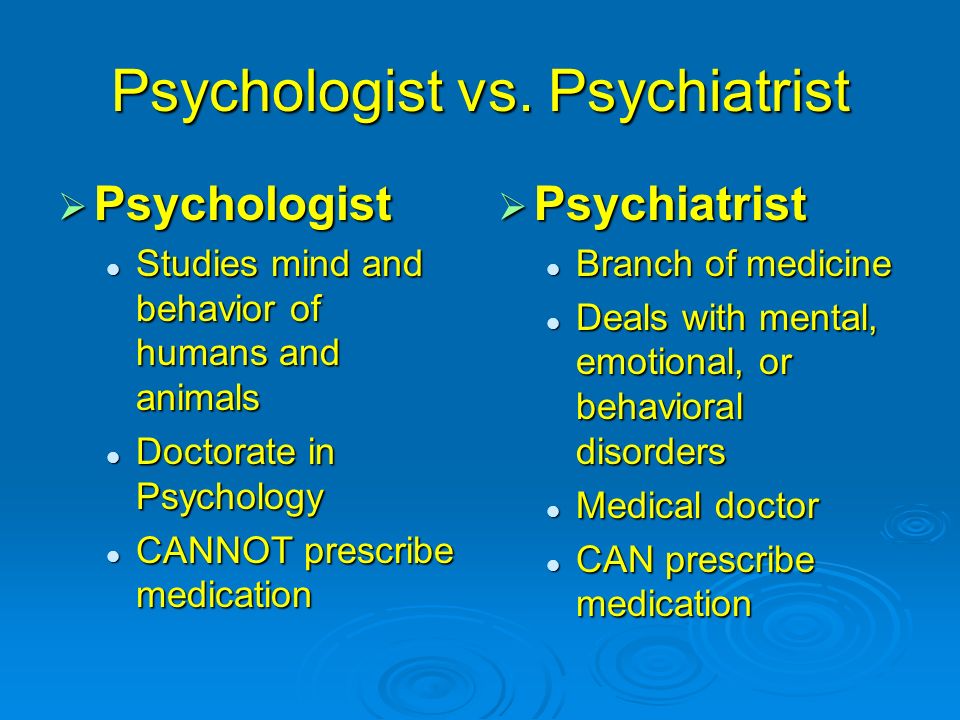 | Virginia Satir (1916-1988) Nationality: American Known for: The Mother of Family Therapy Satir conducted a wide variety of work within the family model. She felt that the family was simply a microcosm of the world and if families could get along peacefully, so could the world. She also published several books on the matter, including Conjoint Family Therapy in 1964. |
| Paul Watzlawick (1921-2007) Nationality: Austrian-American Known for: Worked in communication theory and radical constructivism Watzlawick theorized that humans are responsible for their own suffering as they create it by trying to fix their emotional problems. He also researched how families communicate and he explores five axioms in his theory, which he called the Interactional View.  | Alice Miller (1923-2010) Nationality: Swiss Known for: Work extensively on the effects of parental child abuse Miller published several works about her discoveries concerning the effects of child abuse on children. Her book The Drama of the Gifted Child became a bestseller in various countries when it was first published in 1981. One of the theories she made was that child abuse led to violence later in life. | Albert Bandura (1925- ) Nationality: Canadian Known for: Formulated the social learning theory Bandura spent about six decades in the field of psychology studying different areas, including personality psychology, social psychology and behavioral psychology. He has been ranked as one of the top five cited psychologists in history, behind Sigmund Freud and B.F. Skinner. |
| Lawrence Kohlberg (1927-1987) Nationality: American Known for: Theory of stages of moral development Kohlberg is credited with creating the field of “moral development” in psychology while he worked on extending the findings of Jean Piaget. 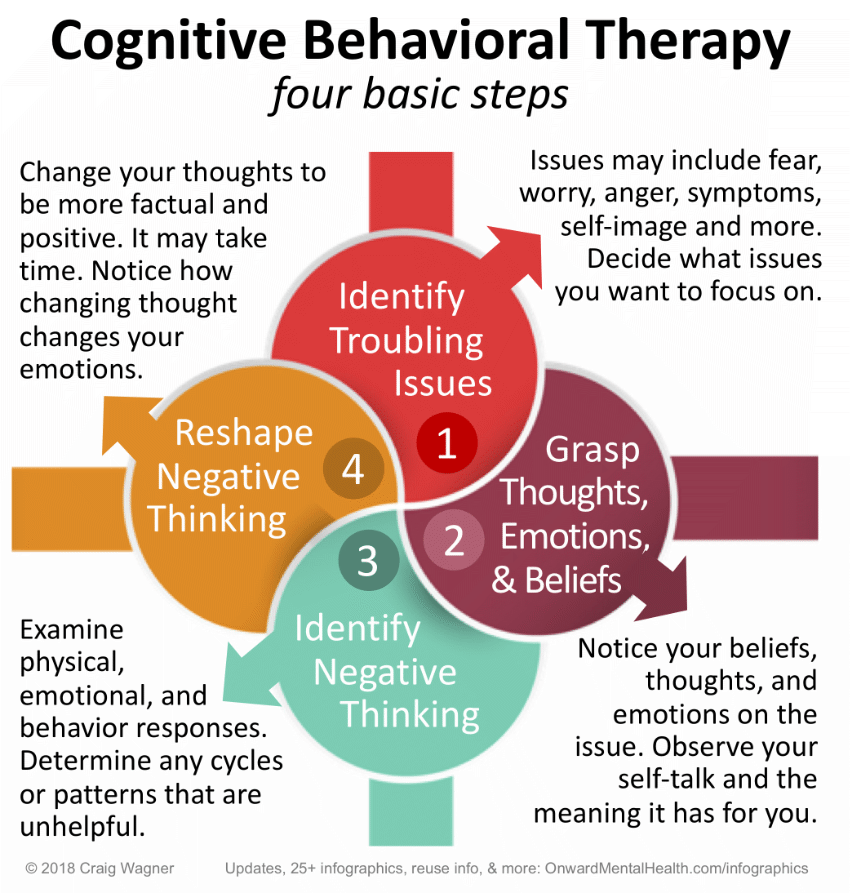 His “stages of moral development” explored how children react to various moral dilemmas, taking into account their age. He stated six stages of moral reasoning with his theory. His “stages of moral development” explored how children react to various moral dilemmas, taking into account their age. He stated six stages of moral reasoning with his theory. | Philip Zimbardo (1933- ) Nationality: American Known for: Stanford prison study Zimbardo is known for a variety of reasons, including his published books regarding psychology. The Lucifer Effect may be his best known and it explores the theory of how good people change to evil. His main idea in the book is that good people often do bad things based on a given situation. | Stanley Milgram (1933-1984) Nationality: American Known for: Studied the effects of authority on obedience One of Milgram’s greatest studies was inspired by the Holocaust and the trial of one of its main participants- Adolf Eichmann. He wanted to study how far humans would go to carry out orders if an authority figure told them to do so.  His peer shock experiment was very controversial, but it is a milestone in the field of psychology. His peer shock experiment was very controversial, but it is a milestone in the field of psychology. |
| Paul Ekman (1934- ) Nationality: American Known for: Studied emotions and related facial expressions Given the title of the “best human lie detector in the world,” Paul Ekman established an “atlas of emotions” which links a particular emotion to the facial expressions that people make when they experience that emotion. His breakthrough discovery is the “micro-expression.” | Daniel Kahneman (1934- ) Nationality: Israeili-American Known for: Extensive work on the psychology of judgment In addition to judgment psychology, Kahneman also explored the idea of hedonic psychology, which is the study of what makes experiences in life either pleasant or unpleasant. 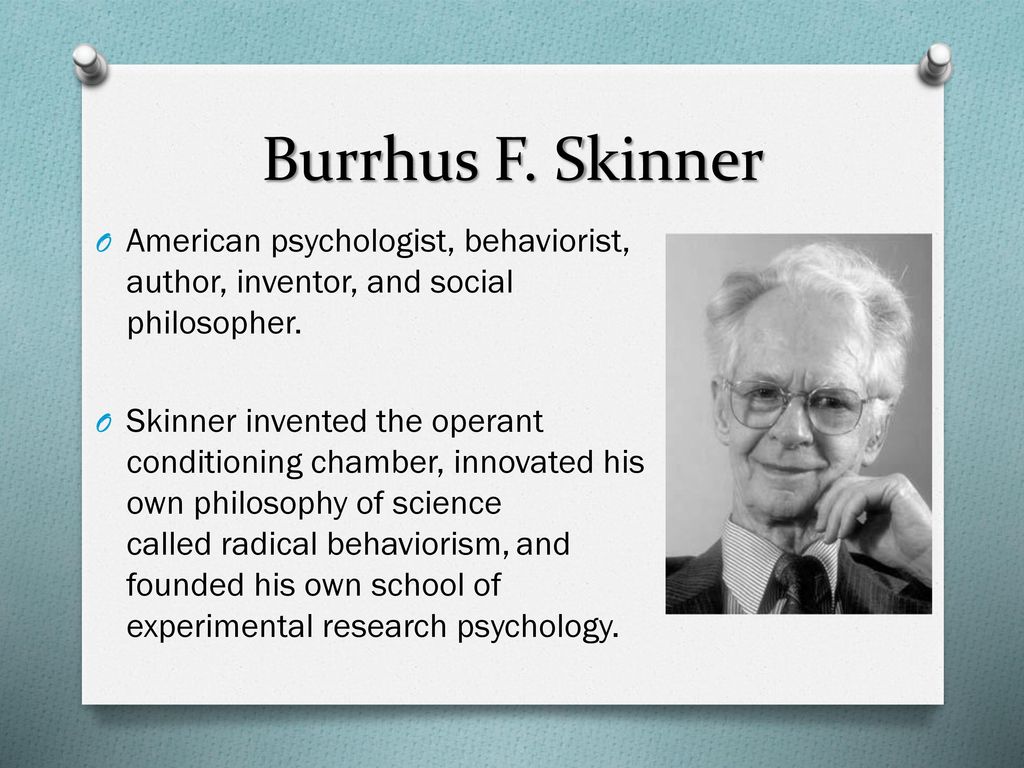 One idea he helped develop was the “focusing illusion,” which places more emphasis on an aspect of one’s happiness than other factors. One idea he helped develop was the “focusing illusion,” which places more emphasis on an aspect of one’s happiness than other factors. | Martin Seligman (1942- ) Nationality: American Known for: Developed the theory of learned helplessness Seligman’s idea of learned helplessness explores the theory that humans or animals are conditioned to behave as if they are helpless when they find themselves in certain situations. He related this idea to clinical depression and mental illness in which a person has a perceived lack of control over their situation. |
| Ken Wilber (1949- ) Nationality: American Known for: Formulated the Integral Theory Wilber has made many contributions to the field of psychology. At the center of his work is the idea of AQAL, or All Quadrants All Levels.  ” This idea involves various categories displayed in a quadrant system as they explore various viewpoints. ” This idea involves various categories displayed in a quadrant system as they explore various viewpoints. | Steven Pinker (1954- ) Nationality: Canadian Known for: Known for supporting the idea of evolutionary psychology One of Pinker’s specialty areas of study is psycholinguistics. He has explored theories as to how children begin understanding language from an early age. He has published several books on the topic, including The Language Instinct, How the Mind Works, and The Blank Slate. |
The most famous psychologists. Outstanding psychologists and their contribution to the development of science
Psychology as an independent science was known in ancient antiquity. It was there that it arose and originated. Over the years, this science has changed, developed and been supplemented or refuted by many psychologists of the world more than once. But, nevertheless, psychology is relevant and develops as a science to this day. Throughout the centuries, psychology has included a huge number of scientific papers, treatises, articles, books, and the most famous scientists, who as a result have been repeatedly mentioned as the most famous psychologists in the world. All these psychologists have made an enormous contribution to the development of psychology in general, and at each of its individual stages. They were able to discover the latest trends in this industry, and they managed to tell the world about something of their own, new, never before driven. Today, in this article, we tried to bring them all together and introduce you to the most famous representatives of this science.
But, nevertheless, psychology is relevant and develops as a science to this day. Throughout the centuries, psychology has included a huge number of scientific papers, treatises, articles, books, and the most famous scientists, who as a result have been repeatedly mentioned as the most famous psychologists in the world. All these psychologists have made an enormous contribution to the development of psychology in general, and at each of its individual stages. They were able to discover the latest trends in this industry, and they managed to tell the world about something of their own, new, never before driven. Today, in this article, we tried to bring them all together and introduce you to the most famous representatives of this science.
21 1039841
Photo gallery: The most famous psychologists in the world
So, we present to your attention a list of the most famous psychologists in the world who were able to turn the whole understanding of psychology. After all, these famous psychologists have repeatedly proved that this science is part of their lives.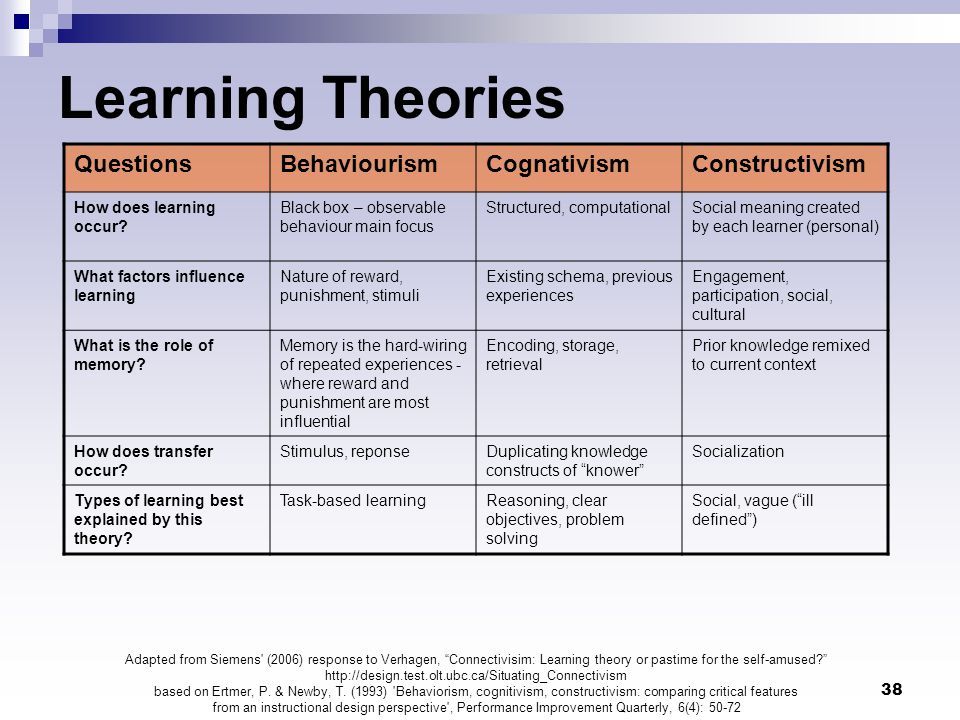
Fix according to Freud .
Sigmund Freud , aka Sigismund Shlomo Freud, is the first psychologist we decided to tell you about. Freud was born on May 6, 1856 in Freiberg, Austria-Hungary, now Příbor, Czech Republic. He is known in the world as a famous Austrian neurologist, who became the founder of the so-called psychoanalytic school with a therapeutic inclination. Sigmud is the "father" of the theory that all human nervous disorders occur due to a number of unconscious and conscious processes that interact very closely with each other.
Vladimir Lvovich Levi, psychologist-poet .
Doctor of Medical Sciences and Psychologist Vladimir Lvovich Levy was born on November 18, 1938 in Moscow, where he still lives. After graduating from the medical institute, he worked as an ambulance doctor for a long time. Then he moved to the post of psychotherapist and became an honorary worker of the Institute of Psychiatry. Vladimir Levy became the first founder of such a new direction in the science of psychology as suicidology. This direction included a complete and detailed study of suicide and the psychological state of people who are suicidal. For all the time he worked in psychiatry, Levy published 60 scientific papers.
This direction included a complete and detailed study of suicide and the psychological state of people who are suicidal. For all the time he worked in psychiatry, Levy published 60 scientific papers.
In addition to psychology, Vladimir is fond of poetry. Therefore, it was not in vain that in 1974 he became an honorary member of the Writers' Union. Levy's most popular books are The Art of Being Oneself, Conversation in Letters, and the three-volume Confessions of a Hypnotist. And in 2000, his personal collection of poems called "Crossed Out Profile" saw the light of day.
Abraham Harold Maslow and his name in psychology
Abraham Harold Maslow is an American psychologist who became the honorary founder of humanistic psychology. His famous scientific works include such a concept as "Maslow's Pyramid". This pyramid includes special diagrams that represent the most common human needs. It is this theory that has found its direct application in economics.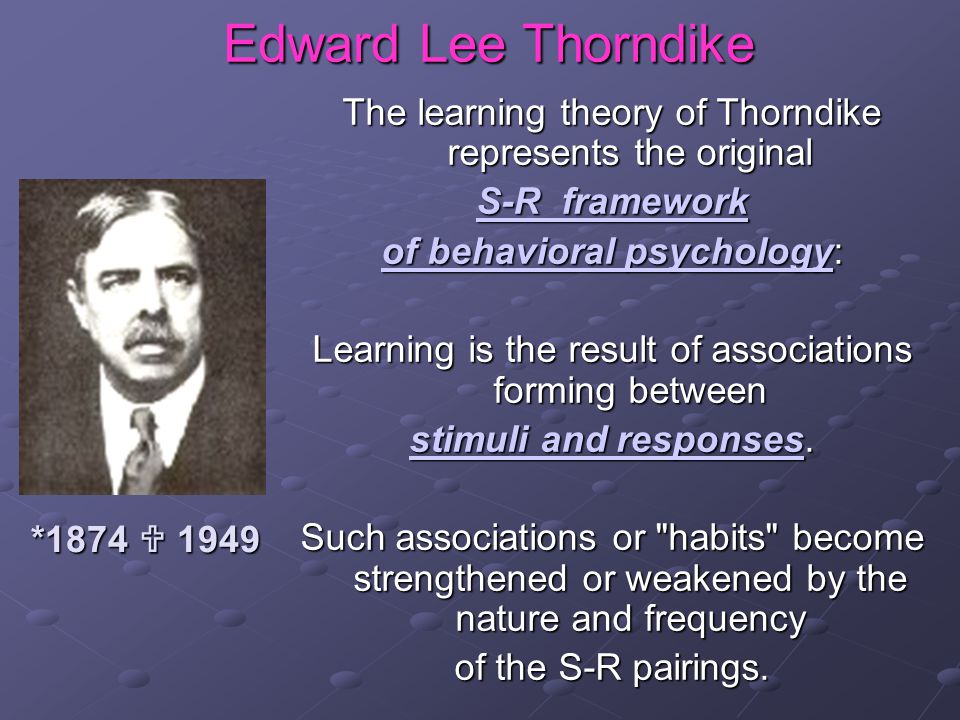
Viktor Emil Frankl: Australian psychologists in science
Famous Austrian psychiatrist and psychologist Viktor Emil Frankl was born March 26, 1905 in Vienna. In the world, his name is associated not only with psychology, but also with philosophy, as well as the creation of the Third Vienna School of Psychotherapy. Frankl's most popular scientific writings include Man's Search for Meaning. The names of this work became the basis for the development of a new method of psychotherapy called logotherapy. This method includes the desire of a person to realize his meaning of life in the existing external world. Logotherapy can make human existence more meaningful.
Boris Ananiev - the pride of Soviet psychology
Boris Gerasimovich Ananiev was born in 1907 in Vladikavkaz. Ananiev was included in the list of "famous psychologists of the world" for a reason. He became the first and honorary founder of the scientific school of psychologists in St.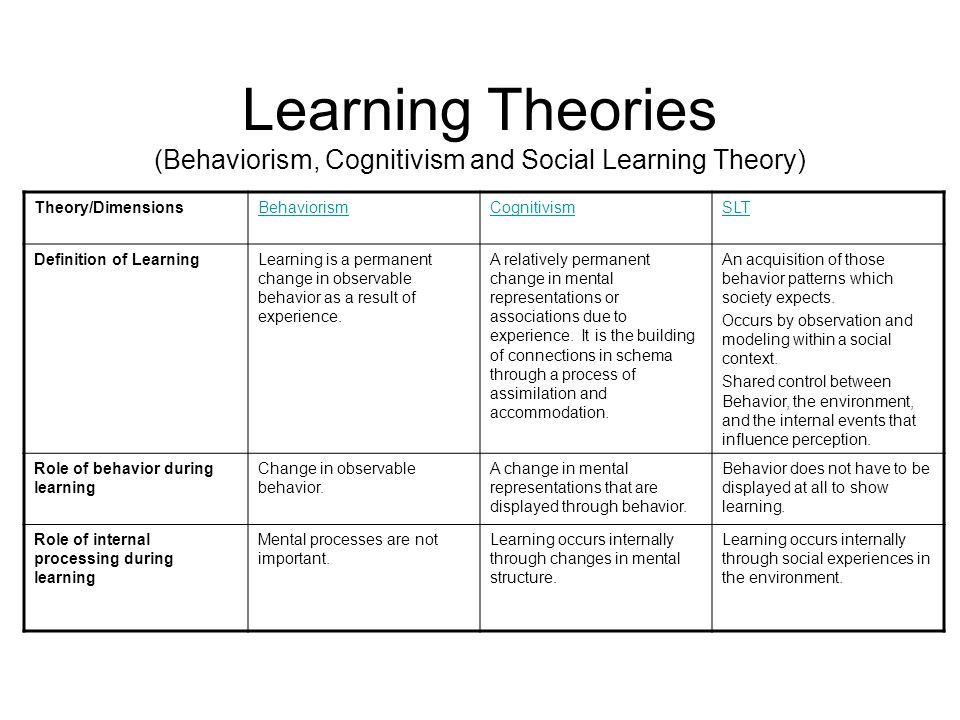 Petersburg. Such famous psychologists as A. Kovalev, B. Lomov and many others became students of this school and, accordingly, of Ananiev himself.
Petersburg. Such famous psychologists as A. Kovalev, B. Lomov and many others became students of this school and, accordingly, of Ananiev himself.
It was in St. Petersburg, on the house where Boris Ananiev lived, that a memorial plaque was erected in his honor.
Ernst Heinrich Weber - famous psychologist of all eras
Brother of the famous physicist Wilhelm Weber, German psychophysiologist and part-time anatomist Ernst Heinrich Weber was born on June 24, 1795 in Leipzig, Germany. This psychologist owns much advanced scientific work on anatomy, sensitivity and physiology. The most popular of these are works that involve the study of the senses. All of Weber's work formed the basis for the development of psychophysics and experimental psychology.
Hakob Poghosovich Nazaretyan and mass psychology
Famous Russian specialist in cultural anthropology and psychology of mass behavior Akop Pogosovich Nazaretyan was born on May 5, 1948 in Baku.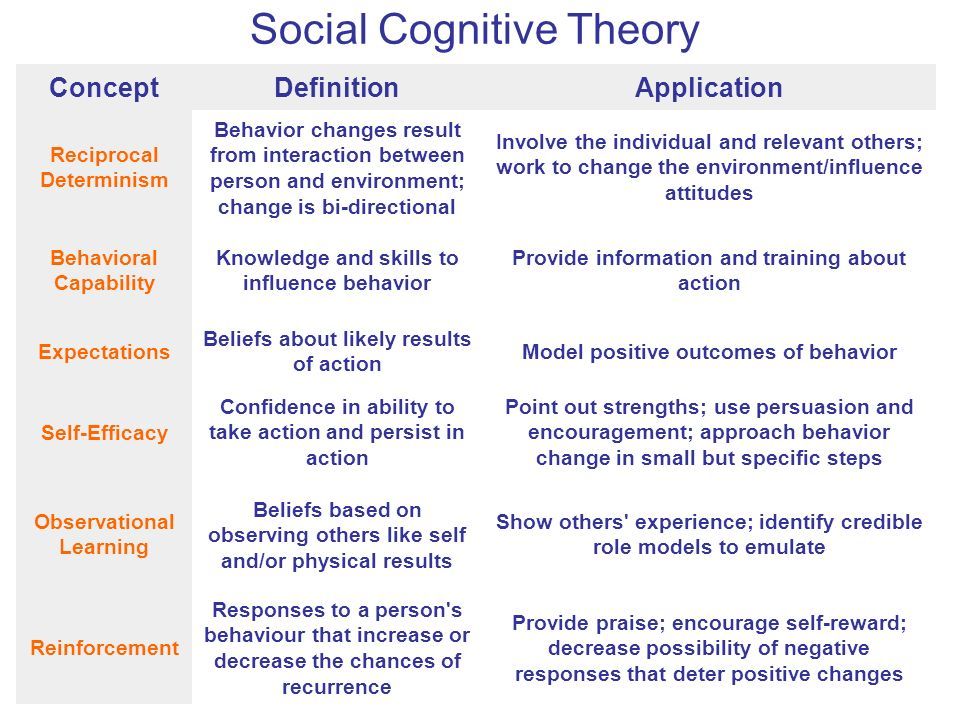 Nazaretyan is the author of a huge number of publications that talk about the theory of the development of society. In addition, the psychologist became the founder of hypotheses about the techno-humanitarian balance, which is compared with the development of culture and technological progress.
Nazaretyan is the author of a huge number of publications that talk about the theory of the development of society. In addition, the psychologist became the founder of hypotheses about the techno-humanitarian balance, which is compared with the development of culture and technological progress.
Viktor Ovcharenko, pride of Russian psychology
Victor Ivanovich Ovcharenko was born on February 5, 1943 in the city of Melekess, Ulyanovsk region. Ovcharenko is a legendary personality in the development of psychology. Ovcharenko has a huge number of scientific titles and weighty works that have made a huge contribution to psychology as a science. The main theme of Ovcharenko's work was the study of sociological psychologism, as well as problems related to personality and interpersonal relationships in general.
In 1996, the psychologist proposed from a scientific point of view for the first time to revise the periodization of the entire history of Russian psychoanalysis.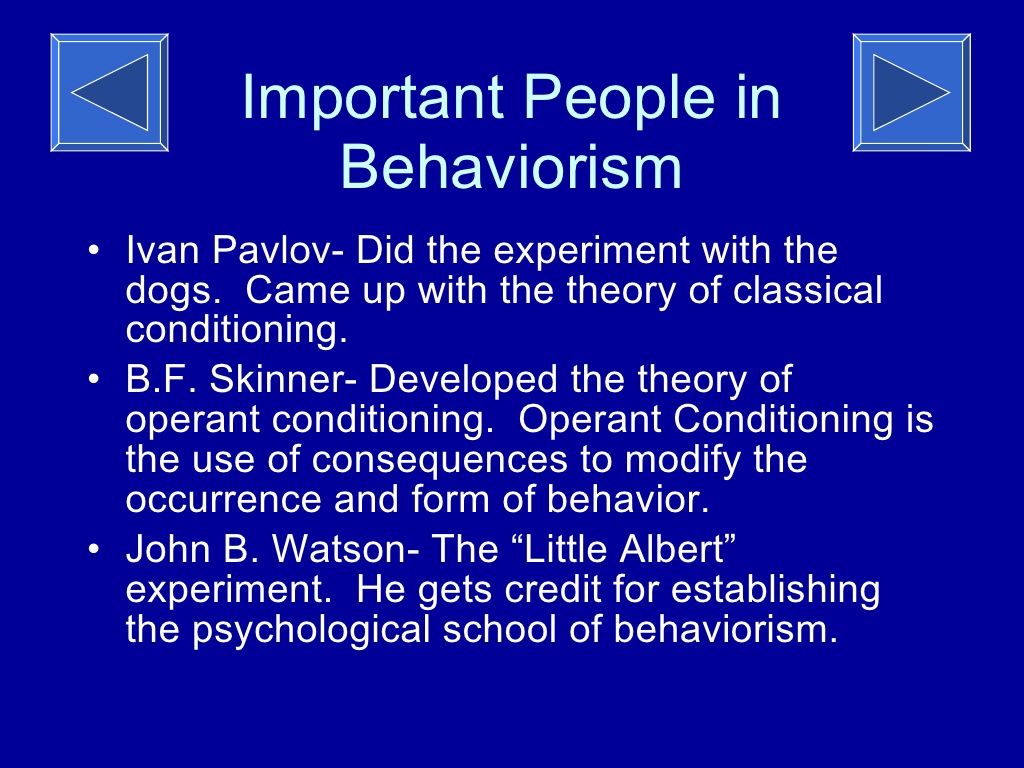 In addition to all of the above, Ovcharenko has been repeatedly called the best psychologist, and his famous works have been published more than once in well-known scientific collections far beyond the borders of Russia.
In addition to all of the above, Ovcharenko has been repeatedly called the best psychologist, and his famous works have been published more than once in well-known scientific collections far beyond the borders of Russia.
The article mentions the 9 most talented geniuses in psychology, without whom this science would not be so useful to society.
Psychology is, perhaps, the only science that allows you to at least slightly open the curtain over the mysterious world of your own soul (from non-medical sciences, of course). Therefore, its modern rapid development does not surprise anyone, because the current conditions of progress and computerization have simply driven many into a dead end with their hasty and hectic rhythm.
And since numerous ratings and top lists have become especially fashionable now, it would be unfair not to mention 9the most famous psychologists in the world who have done a lot for the development of psychology as a science.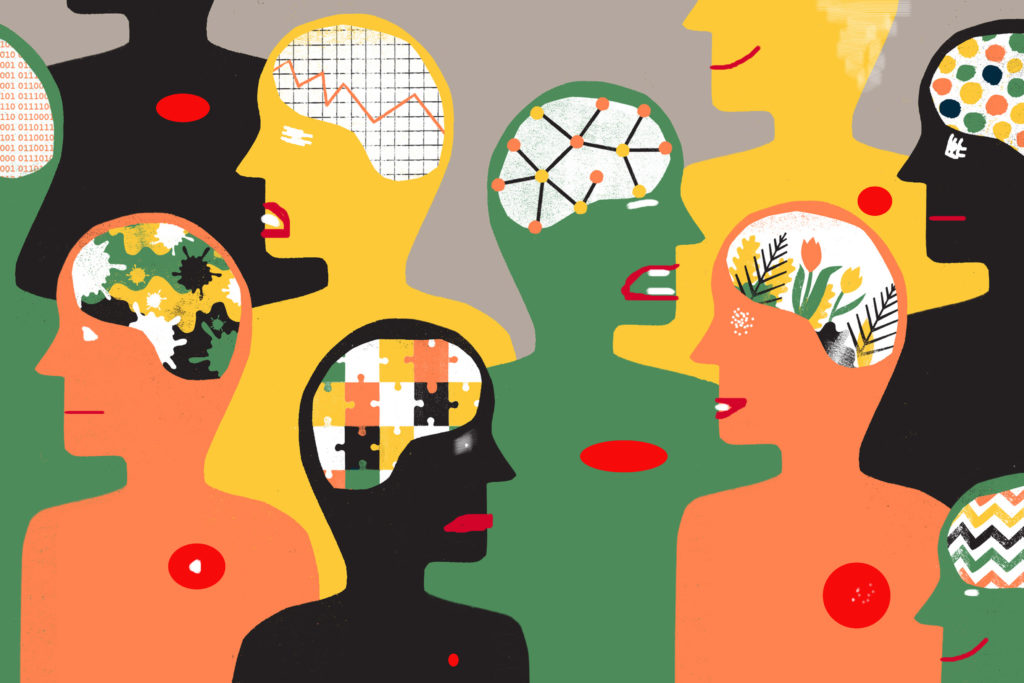
So, this rating is headed by B. F. Skinner , which at one time helped to develop behaviorism almost to its current state. It is thanks to this person that effective methods of therapy regarding behavior modification are now widely used in the world.
In second place in this top is the famous. It is this man who is considered the founder of psychoanalysis, and only this scientist proved for the first time that cultural and social differences strongly influence the formation of personality and the formation of basic character traits.
Albert Bandura deservedly won the third place , because his works and psychological developments are considered an integral part of all cognitive psychology. This specialist devoted the lion's share of his life and professional activity to the study of learning as a necessary social phenomenon.
Fourth place is occupied by the psychologist who has made a considerable contribution to the development of child psychology.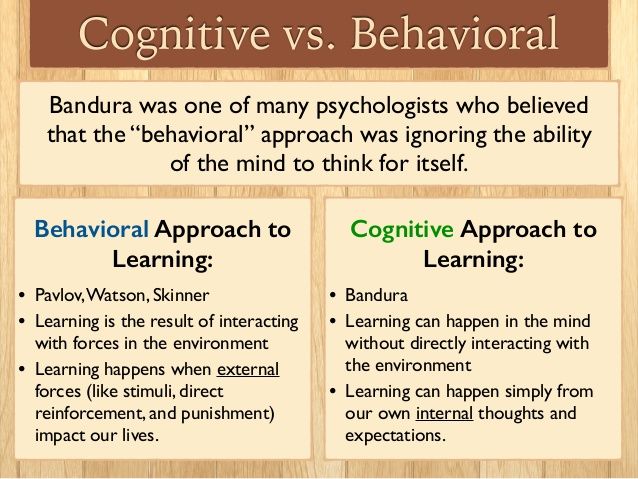 Jean Piaget almost all his life studied the features of the development of children's intelligence and the impact of such features on later adult life. The research of this psychologist also brought a lot of benefits to such areas of mental science as: genetic epistemology, cognitive psychology and prenatal psychology.
Jean Piaget almost all his life studied the features of the development of children's intelligence and the impact of such features on later adult life. The research of this psychologist also brought a lot of benefits to such areas of mental science as: genetic epistemology, cognitive psychology and prenatal psychology.
In fifth place you can see Carl Rogers , which was distinguished by its special humanism and the promotion of democratic ideas in psychology. In his numerous works, Rogers emphasized the human spiritual and intellectual potential, which made him an outstanding thinker of his time.
Followed by the father of American psychology, William James , who worked as a social pedagogue for 35 years. This man brought a lot of value to modern pragmatism, and also helped develop functionalism as a separate trend in psychology.
Eric Erikson takes the seventh place of honor , whose writings on the stages of psychosociological development have helped scientists more adequately evaluate not only the events of adult life, but also the events of early childhood and late old age. This psychologist sincerely believed that each person does not stop his development, right up to old age, which earned him the respect and reverence of many generations.
This psychologist sincerely believed that each person does not stop his development, right up to old age, which earned him the respect and reverence of many generations.
Ivan Pavlov is resting in eighth place. The same Pavlov who worked hard for the development of behaviorism. The same scientist at one time helped to significantly move psychology, as a science, from subjective introspection to a completely objective method of measuring behavior.
And the last, ninth place in this psychological top is occupied by Kurt Lewin , father of current social psychology. It is Levin who is considered the most brilliant theoretician who was able to prove in action all his innovative theories and open the eyes of many scientists to the true state of affairs in social psychology.
This list includes only those scientists who devoted their entire lives to the study and development of social and other psychology for the benefit of their generation and all the next.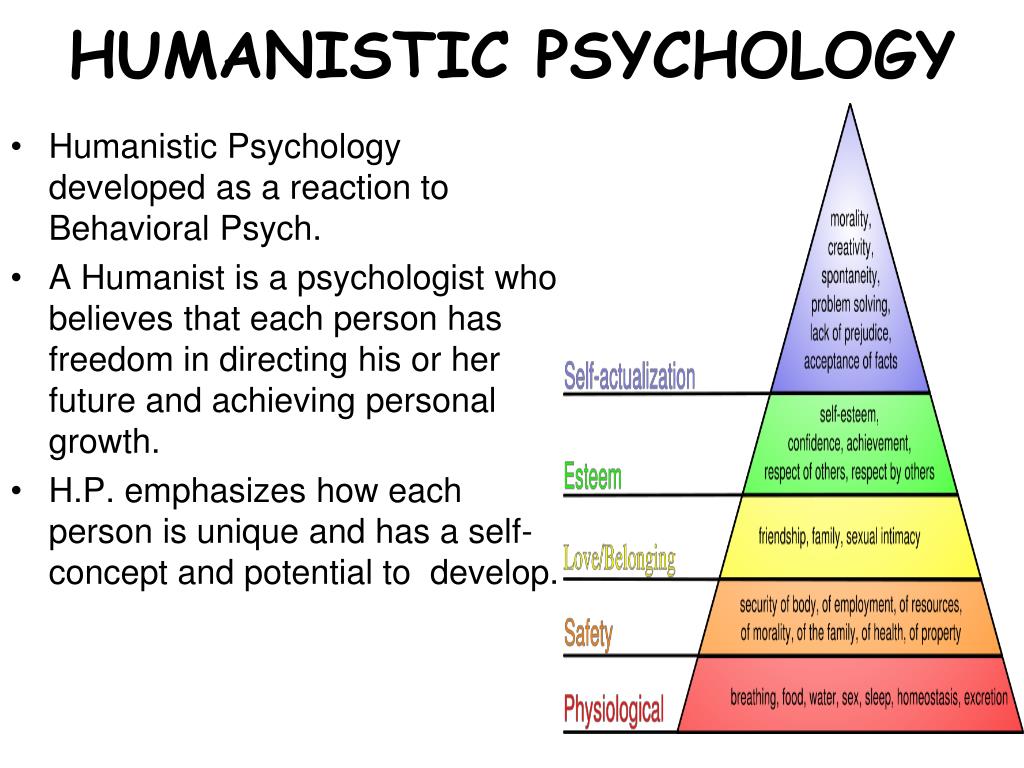
Open any newspaper or magazine and you will find the terms proposed by Sigmund Freud. Sublimation, projection, transference, defenses, complexes, neuroses, hysterias, stresses, psychological traumas and crises, etc. - all these words have firmly entered our lives. And the books of Freud and other prominent psychologists also firmly entered it. We offer you a list of the best - those that have changed our reality. Save yourself so you don't lose!
Eric Berne is the author of the famous concept of scenario programming and game theory. They are based on transactional analysis, which is now being studied all over the world. Bern believes that every person's life is programmed up to the age of five, and then we all play games with each other using three roles: Adult, Parent and Child. Read more about this world-famous concept in the review of Bern's bestseller " ", presented in the Library "Main Thought".
Edward de Bono, a British psychologist, developed a method for teaching effective thinking. The six hats are six different ways of thinking. De Bono suggests "trying on" each headgear to learn how to think in different ways depending on the situation. The red hat is emotion, the black hat is criticism, the yellow hat is optimism, the green hat is creativity, the blue hat is mind control, and the white hat is facts and figures. you can read in the Library "Main Thought".
The six hats are six different ways of thinking. De Bono suggests "trying on" each headgear to learn how to think in different ways depending on the situation. The red hat is emotion, the black hat is criticism, the yellow hat is optimism, the green hat is creativity, the blue hat is mind control, and the white hat is facts and figures. you can read in the Library "Main Thought".
- Alfred Adler. Understand human nature
Alfred Adler is one of the most famous students of Sigmund Freud. He created his own concept of individual (or individual) psychology. Adler wrote that a person's actions are influenced not only by the past (as Freud taught), but also by the future, or rather the goal that a person wants to achieve in the future. And based on this goal, he transforms his past and present. In other words, only knowing the goal, we can understand why a person acted this way and not otherwise. Take, for example, the image with the theater: only by the last act do we understand the actions of the characters that they performed in the first act.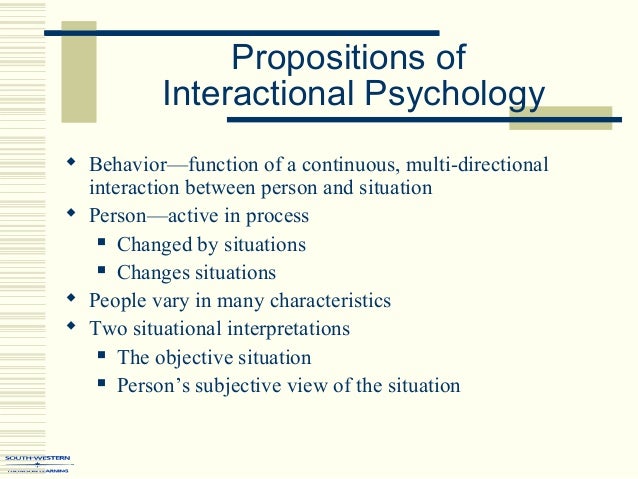 You can read about the universal law of personality development proposed by Adler in the article: "".
You can read about the universal law of personality development proposed by Adler in the article: "".
MD, psychiatrist and psychoanalyst Norman Doidge devoted his research to brain plasticity. In his main work, he makes a revolutionary statement: our brain is able to change its own structure and work due to the thoughts and actions of a person. Doidge talks about the latest discoveries that prove that the human brain is plastic, which means it can change itself. The book features stories of scientists, doctors, and patients who have achieved amazing transformations. Those who had serious problems managed to cure brain diseases that were considered incurable without surgery and pills. Well, those who did not have any special problems were able to significantly improve the functioning of their brain. More details provided in the Main Thought Library.
Susan Weinschenk is a well-known American psychologist specializing in behavioral psychology. She is called "The Brain Lady" as she studies the latest advances in neuroscience and the human brain and applies her knowledge to business and everyday life.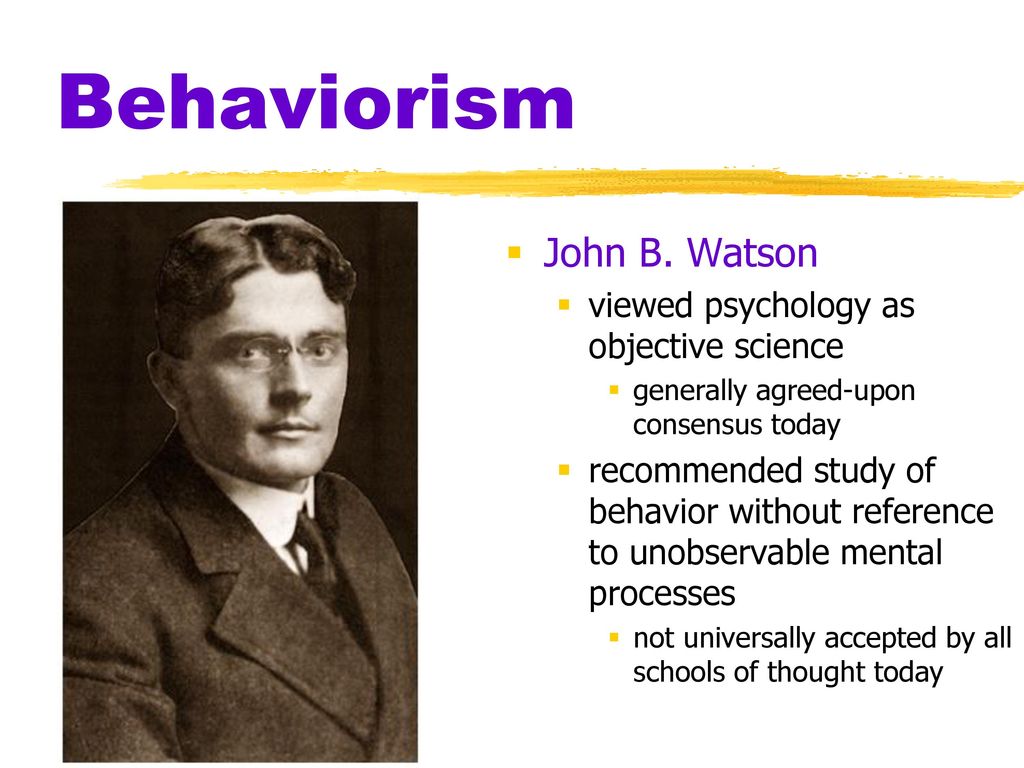 Susan talks about the basic laws of the psyche. In her bestselling book, she identifies 7 main motivators of human behavior that affect our lives. More about this in the review of the book "", presented in the Library "Main Thought".
Susan talks about the basic laws of the psyche. In her bestselling book, she identifies 7 main motivators of human behavior that affect our lives. More about this in the review of the book "", presented in the Library "Main Thought".
- Eric Erickson. Childhood and society
Erik Erickson is an outstanding psychologist who detailed and supplemented the famous age periodization of Sigmund Freud. The periodization of human life proposed by Erickson consists of 8 stages, each of which ends with a crisis. This crisis a person must go through correctly. If it does not pass, then it (the crisis) is added to the load in the next period. You can read about important age periods in the life of adults in the article: "".
The famous book of the famous American psychologist Robert Cialdini. It has become a classic in social psychology. "" is recommended by the best scientists in the world as a guide to interpersonal relationships and conflict resolution.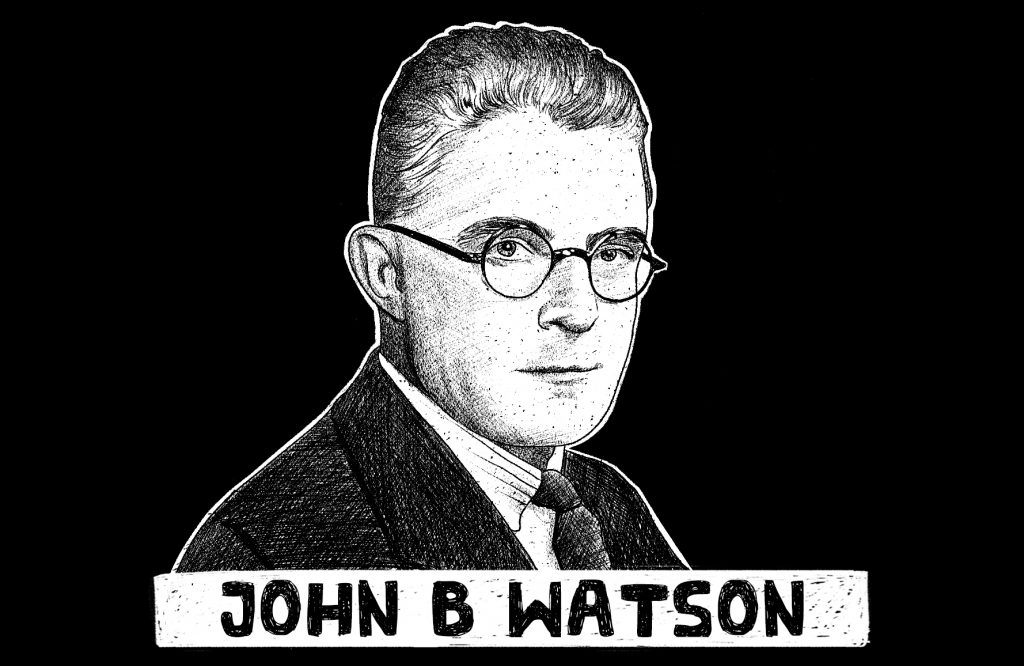 An overview of this book is available in the Main Thought Library.
An overview of this book is available in the Main Thought Library.
- Hans Eysenck. Personality measurements
Hans Eysenck - British psychologist, one of the leaders of the biological direction in psychology, the creator of the factor theory of personality. He is best known as the author of the popular IQ test.
Psychologist Daniel Goleman completely changed our understanding of leadership by declaring that "emotional intelligence" (EQ) is more important than IQ for a leader. Emotional intelligence (EQ) is the ability to identify and understand emotions, both one's own and those of others, and the ability to use this knowledge to manage one's behavior and relationships with people. A leader who is not emotionally intelligent may be highly trained, have a sharp mind, and endlessly generate new ideas, but he will still lose out to a leader who knows how to manage emotions. Why this happens, you can read in the review of Goleman's book "", presented in the Library "Main Thought".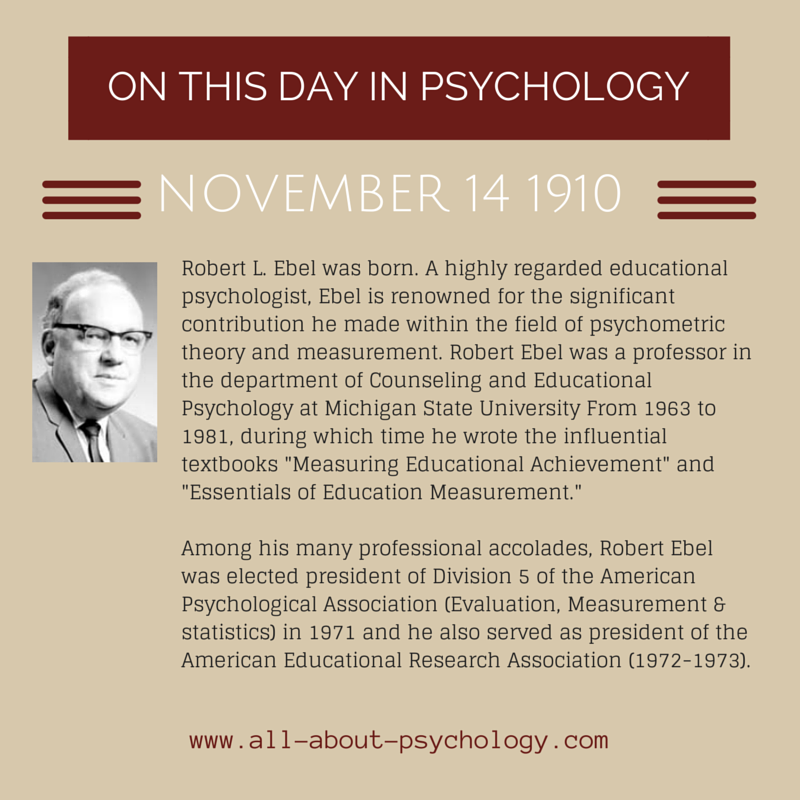
The famous sociologist Malcolm Gladwell presented a number of interesting studies on intuition. He is sure that each of us has intuition, and it is worth listening to it. Our unconscious, without our participation, processes huge amounts of data and gives out the most correct solution on a silver platter, which we just have to not miss and use properly for ourselves. However, intuition is easily frightened by the lack of time to make a decision, the state of stress, as well as the attempt to describe in words your thoughts and actions. An overview of Gladwell's bestseller "" is in the Big Thought Library.
- Victor Frankl. Will to Meaning
Viktor Frankl is a world-famous Austrian psychologist and psychiatrist, student of Alfred Adler and founder of logotherapy. Logotherapy (from the Greek "Logos" - the word and "terapia" - care, care, treatment) is a direction in psychotherapy that arose on the basis of the conclusions that Frankl made while being a concentration camp prisoner. This is a therapy for finding meaning, this is the way that helps a person find meaning in any circumstances of his life, including such extreme ones as suffering. And here it is very important to understand the following: in order to find this meaning, Frankl suggests examining no depth of personality (as Freud believed), and its heights. This is a very serious difference in accent. Before Frankl, psychologists mainly tried to help people by exploring the depths of their subconscious, and Frankl insists on the full disclosure of a person's potential, on exploring his heights. Thus, he places emphasis, figuratively speaking, on the spire of the building (height), and not on its basement (depths).
This is a therapy for finding meaning, this is the way that helps a person find meaning in any circumstances of his life, including such extreme ones as suffering. And here it is very important to understand the following: in order to find this meaning, Frankl suggests examining no depth of personality (as Freud believed), and its heights. This is a very serious difference in accent. Before Frankl, psychologists mainly tried to help people by exploring the depths of their subconscious, and Frankl insists on the full disclosure of a person's potential, on exploring his heights. Thus, he places emphasis, figuratively speaking, on the spire of the building (height), and not on its basement (depths).
- Sigmund Freud. Dream interpretation
- Anna Freud. Psychology Self and defense mechanisms
Anna Freud is the youngest daughter of the founder of psychoanalysis, Sigmund Freud. She founded a new direction in psychology - ego psychology.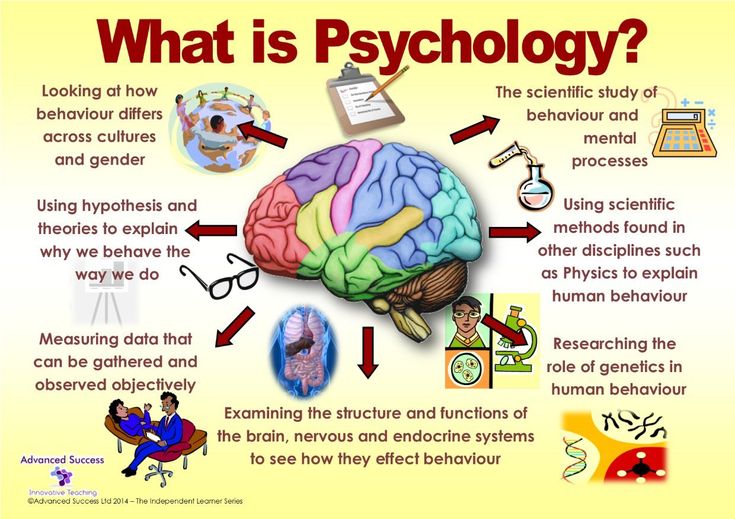 Her main scientific merit is the development of the theory of human defense mechanisms. Anna also made significant progress in studying the nature of aggression, but still her most significant contribution to psychology was the creation of child psychology and child psychoanalysis.
Her main scientific merit is the development of the theory of human defense mechanisms. Anna also made significant progress in studying the nature of aggression, but still her most significant contribution to psychology was the creation of child psychology and child psychoanalysis.
- Nancy McWilliams. Psychoanalytic diagnostics
This book is the bible of modern psychoanalysis. American psychoanalyst Nancy McWilliams writes that we are all irrational to some extent, which means that for each person it is necessary to answer two basic questions: “How crazy?” and “What exactly is psycho?” The first question can be answered by three levels of the work of the psyche (details in the article: ""), and the second - by types of character (narcissistic, schizoid, depressive, paranoid, hysterical, etc.), studied in detail by Nancy McWilliams and described in the book " Psychoanalytic Diagnosis".
- Carl Jung. Archetype and symbol
Carl Jung is the second famous student of Sigmund Freud (we have already talked about Alfred Adler).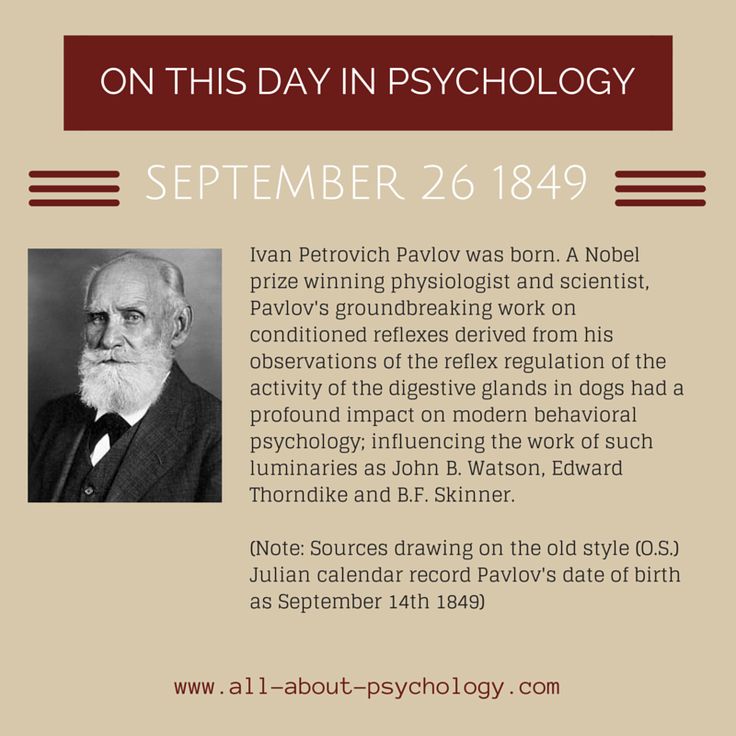 Jung believed that the unconscious is not only the lowest in a person, but also the highest, for example, creativity. The unconscious thinks in symbols. Jung introduces the concept of the collective unconscious, with which a person is born, it is the same for everyone. When a person is born, he is already filled with ancient images, archetypes. They pass from generation to generation. Archetypes affect everything that happens to a person.
Jung believed that the unconscious is not only the lowest in a person, but also the highest, for example, creativity. The unconscious thinks in symbols. Jung introduces the concept of the collective unconscious, with which a person is born, it is the same for everyone. When a person is born, he is already filled with ancient images, archetypes. They pass from generation to generation. Archetypes affect everything that happens to a person.
- Abraham Maslow. The far reaches of the human psyche
Martin Seligman is an outstanding American psychologist, the founder of positive psychology. He became world famous for his studies of the phenomenon of learned helplessness, that is, passivity in the face of allegedly irremovable troubles. Seligman proved that the basis of helplessness and its extreme manifestation - depression - is pessimism. The psychologist introduces us to two of his main concepts: the theory of learned helplessness and the concept of explanatory style.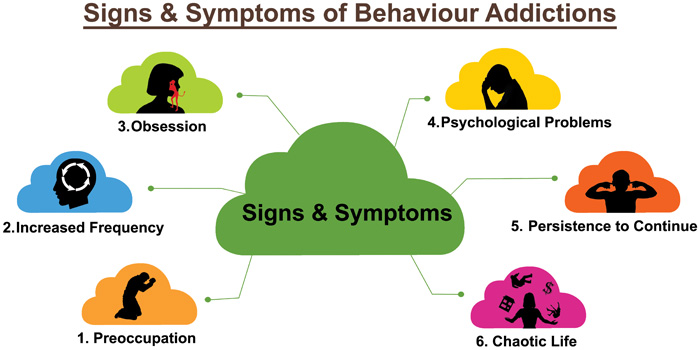 They are closely related. The first explains why we become pessimists, and the second explains how to change the way we think so that we turn from a pessimist into an optimist. An overview of Seligman's book "" is presented in the Main Thought Library.
They are closely related. The first explains why we become pessimists, and the second explains how to change the way we think so that we turn from a pessimist into an optimist. An overview of Seligman's book "" is presented in the Main Thought Library.
Share with your friends:
Open any newspaper or magazine and you will find the terms proposed by Sigmund Freud. Sublimation, projection, transference, defenses, complexes, neuroses, hysterias, stresses, psychological traumas and crises, etc. - all these words have firmly entered our lives. And the books of Freud and other prominent psychologists also firmly entered it. We offer you a list of the very best - those that have changed our reality
Open any newspaper or magazine and you will find the terms proposed by Sigmund Freud. Sublimation, projection, transference, defenses, complexes, neuroses, hysterias, stresses, psychological traumas and crises, etc. - all these words have firmly entered our lives.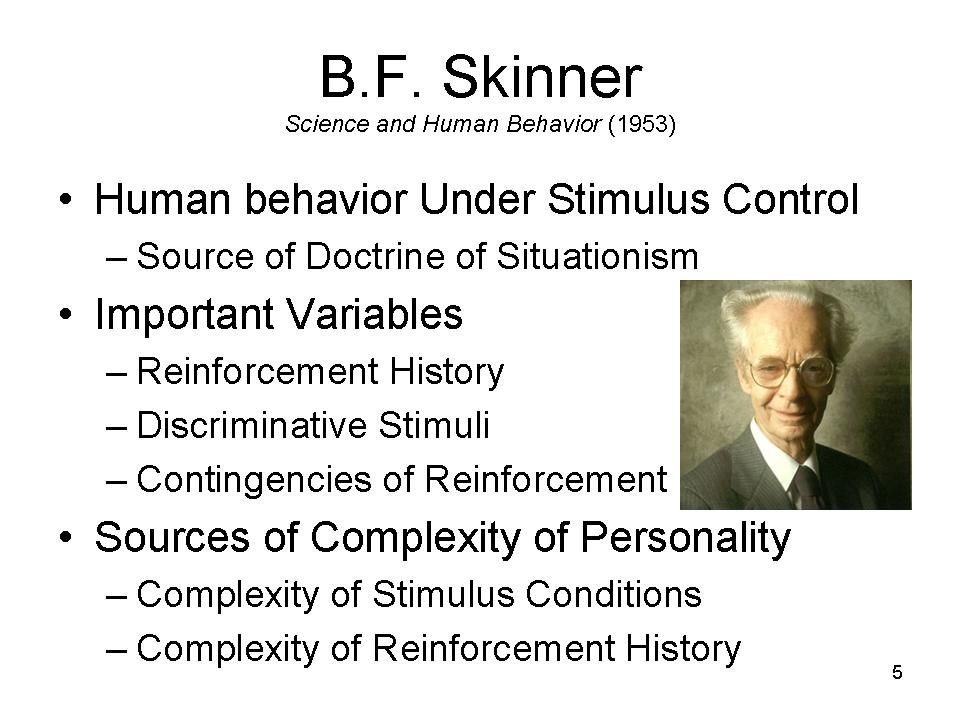 And the books of Freud and other prominent psychologists also firmly entered it.
And the books of Freud and other prominent psychologists also firmly entered it.
We offer you a list of the very best - those that have changed our reality.
Eric Bern. Games People Play.
Bern believes that every person's life is programmed up to the age of five, and then we all play games with each other using three roles: Adult, Parent and Child.
Edward de Bono. Six Thinking Hats
Edward de Bono, a British psychologist, developed a method for teaching effective thinking. The six hats are six different ways of thinking. De Bono suggests "trying on" each headgear to learn how to think in different ways depending on the situation.
The red hat is emotion, the black hat is criticism, the yellow hat is optimism, the green hat is creativity, the blue one is thought control, and the white one is facts and figures.
Alfred Adler. Understand human nature
Alfred Adler - one of the most famous students of Sigmund Freud.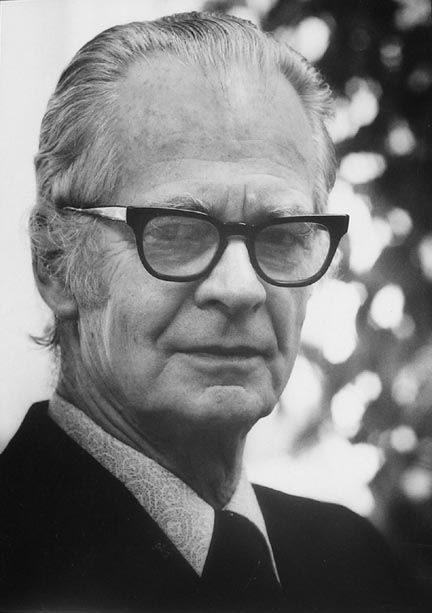 He created his own concept of individual (or individual) psychology. Adler wrote that a person's actions are influenced not only by the past (as Freud taught), but also by the future, or rather the goal that a person wants to achieve in the future. And based on this goal, he transforms his past and present.
He created his own concept of individual (or individual) psychology. Adler wrote that a person's actions are influenced not only by the past (as Freud taught), but also by the future, or rather the goal that a person wants to achieve in the future. And based on this goal, he transforms his past and present.
In other words, only knowing the purpose, we can understand why a person acted this way and not otherwise. Take, for example, the image with the theater: only by the last act do we understand the actions of the characters that they performed in the first act.
Norman Doidge. Brain plasticity
MD, psychiatrist and psychoanalyst Norman Doidge devoted his research to brain plasticity. In his main work, he makes a revolutionary statement: our brain is able to change its own structure and work due to the thoughts and actions of a person. Doidge talks about the latest discoveries that prove that the human brain is plastic, which means it can change itself.
The book features stories of scientists, doctors and patients who have achieved amazing transformations. Those who had serious problems managed to cure brain diseases that were considered incurable without surgery and pills. Well, those who did not have any special problems were able to significantly improve the functioning of their brain.
Susan Weinshenk Laws of Influence
Susan Weinschenk is a renowned American psychologist specializing in behavioral psychology. She is called "The Brain Lady" as she studies the latest advances in neuroscience and the human brain and applies her knowledge to business and everyday life.
Susan talks about the basic laws of the psyche. In her bestselling book, she identifies 7 main motivators of human behavior that affect our lives.
Eric Erickson. Childhood and society
Eric Erickson is an outstanding psychologist who detailed and supplemented the famous age periodization of Sigmund Freud.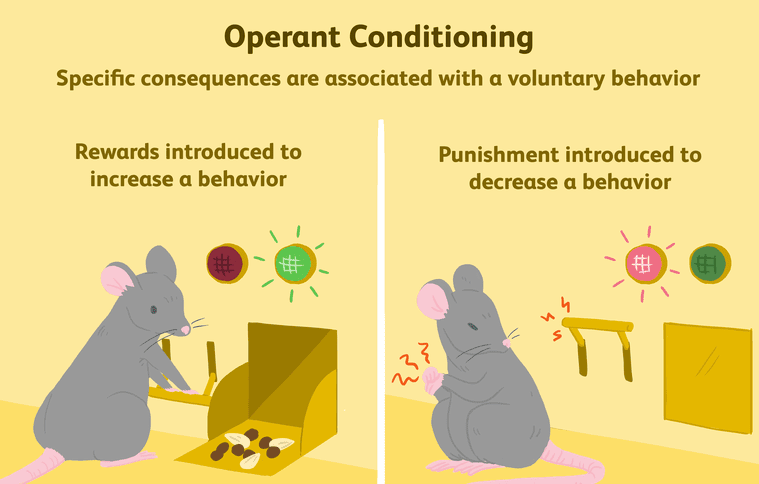 The periodization of human life proposed by Erickson consists of 8 stages, each of which ends with a crisis. This crisis a person must go through correctly. If it does not pass, then it (the crisis) is added to the load in the next period.
The periodization of human life proposed by Erickson consists of 8 stages, each of which ends with a crisis. This crisis a person must go through correctly. If it does not pass, then it (the crisis) is added to the load in the next period.
Robert Cialdini. The psychology of persuasion
The famous book of the famous American psychologist Robert Cialdini. It has become a classic in social psychology. "Psychology of Persuasion" is recommended by the world's best scientists as a guide to interpersonal relationships and conflict management.
Hans Eysenck. Personality measurements
Hans Eysenck - British psychologist, one of the leaders of the biological direction in psychology, the creator of the factor theory of personality. He is best known as the author of the popular IQ test.
Daniel Goleman. Emotional Leadership
Psychologist Daniel Goleman completely changed our understanding of leadership by declaring that "emotional intelligence" (EQ) is more important than IQ for a leader.
Emotional intelligence (EQ) is the ability to identify and understand emotions, both one's own and those of others, and the ability to use this knowledge to manage one's behavior and relationships with people. A leader who is not emotionally intelligent may be highly trained, have a sharp mind, and endlessly generate new ideas, but he will still lose out to a leader who knows how to manage emotions.
Malcolm Gladwell. Insight: The Power of Instant Decisions
The famous sociologist Malcolm Gladwell presented a number of interesting studies on intuition. He is sure that each of us has intuition, and it is worth listening to it. Our unconscious, without our participation, processes huge amounts of data and gives out the most correct solution on a silver platter, which we just have to not miss and use properly for ourselves.
However, intuition is easily frightened by the lack of time to make a decision, the state of stress, and also by trying to describe your thoughts and actions in words.
Viktor Frankl. Will to Meaning
Viktor Frankl is a world-famous Austrian psychologist and psychiatrist, student of Alfred Adler and founder of logotherapy. Logotherapy (from the Greek "Logos" - the word and "terapia" - care, care, treatment) is a direction in psychotherapy that arose on the basis of the conclusions that Frankl made while being a concentration camp prisoner.
This is a meaning-seeking therapy, this is the way that helps a person find meaning in any circumstances of his life, including such extreme ones as suffering. And here it is very important to understand the following: in order to find this meaning, Frankl proposes to explore not the depths of the personality (as Freud believed), but its heights.
This is a very significant difference in accent. Before Frankl, psychologists mainly tried to help people by exploring the depths of their subconscious, and Frankl insists on the full disclosure of a person's potential, on exploring his heights.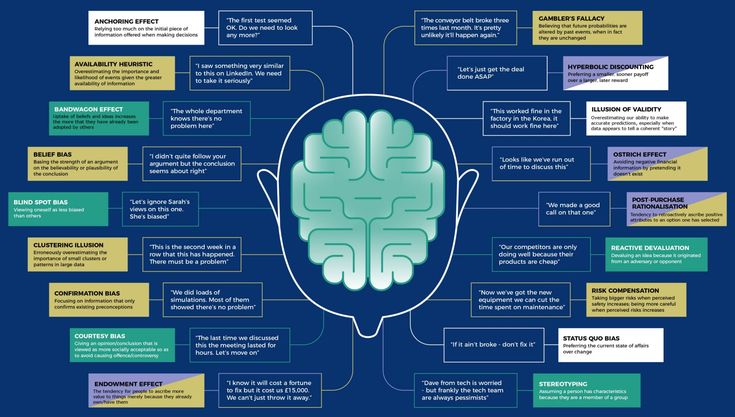 Thus, he places emphasis, figuratively speaking, on the spire of the building (height), and not on its basement (depths).
Thus, he places emphasis, figuratively speaking, on the spire of the building (height), and not on its basement (depths).
Sigmund Freud. Dream interpretation
Sigmund Freud does not need to be introduced. Let us say only a few words about his main conclusions. The founder of psychoanalysis believed that nothing happens just like that, you always have to look for the cause. And the cause of psychological problems lies in the unconscious.
He came up with a new method that introduces into the unconscious, and therefore studies it - this is the method of free associations. Freud was sure that everyone lived in the Oedipus complex (for men) or the Electra complex (for women). The formation of personality occurs precisely during this period - from 3 to 5 years.
Anna Freud. Psychology Self and defense mechanisms
Anna Freud is the youngest daughter of the founder of psychoanalysis, Sigmund Freud. She founded a new direction in psychology - ego psychology.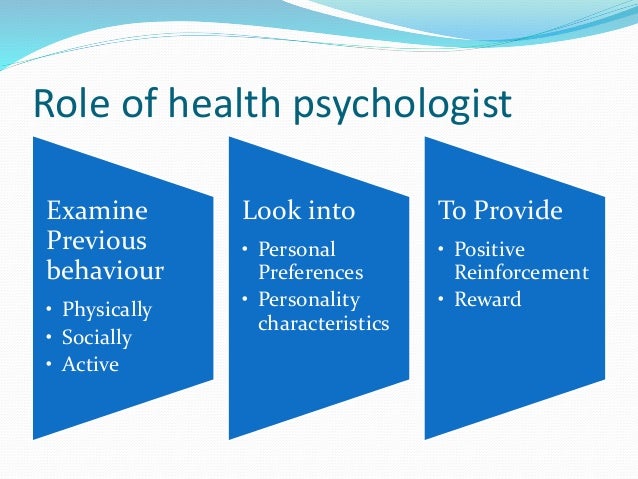 Her main scientific merit is the development of the theory of human defense mechanisms.
Her main scientific merit is the development of the theory of human defense mechanisms.
Anna also made significant progress in studying the nature of aggression, but still her most significant contribution to psychology was the creation of child psychology and child psychoanalysis.
Nancy McWilliams. Psychoanalytic diagnostics
This book is the bible of modern psychoanalysis. American psychoanalyst Nancy McWilliams writes that we are all irrational to some extent, which means that for each person it is necessary to answer two basic questions: “How crazy?” and “What exactly is psycho?”
The first question can be answered by three levels of the psyche, and the second - by the types of character (narcissistic, schizoid, depressive, paranoid, hysterical, etc.), studied in detail by Nancy McWilliams and described in the book "Psychoanalytic Diagnosis".
Carl Jung. Archetype and symbol
Carl Jung - the second famous student of Sigmund Freud (we have already talked about Alfred Adler).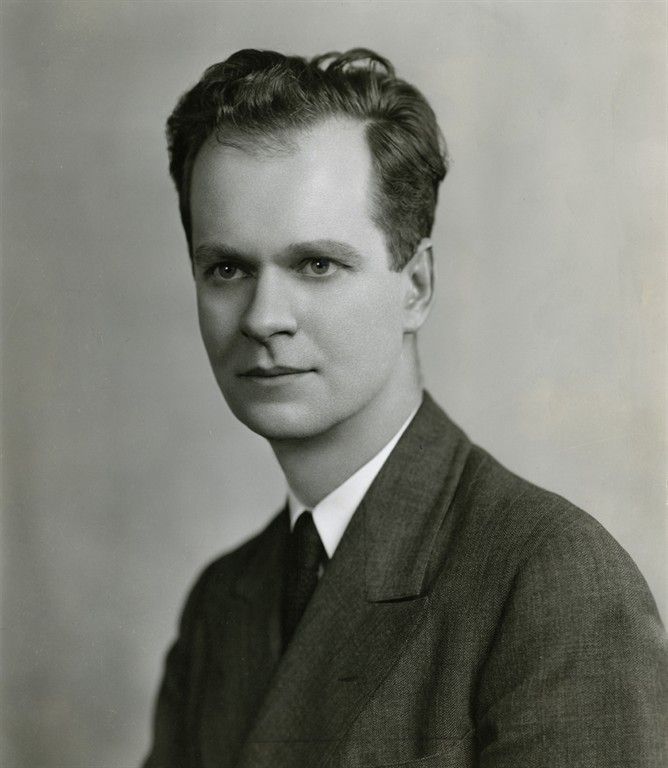 Jung believed that the unconscious is not only the lowest in a person, but also the highest, for example, creativity. The unconscious thinks in symbols.
Jung believed that the unconscious is not only the lowest in a person, but also the highest, for example, creativity. The unconscious thinks in symbols.
Jung introduces the concept of the collective unconscious, with which a person is born, it is the same for everyone. When a person is born, he is already filled with ancient images, archetypes. They pass from generation to generation. Archetypes affect everything that happens to a person.
Abraham Maslow. The far reaches of the human psyche
Abraham Maslow is a world famous psychologist whose pyramid of needs is known to everyone. But Maslow is famous for more than that. He was the first to describe a mentally healthy person. Psychiatrists, psychotherapists, as a rule, deal with mental disorders. This area is fairly well explored. But few have studied mental health. What does it mean to be a healthy person? Where is the line between pathology and normality?
Martin Seligman. How to learn optimism
Martin Seligman - an outstanding American psychologist, the founder of positive psychology.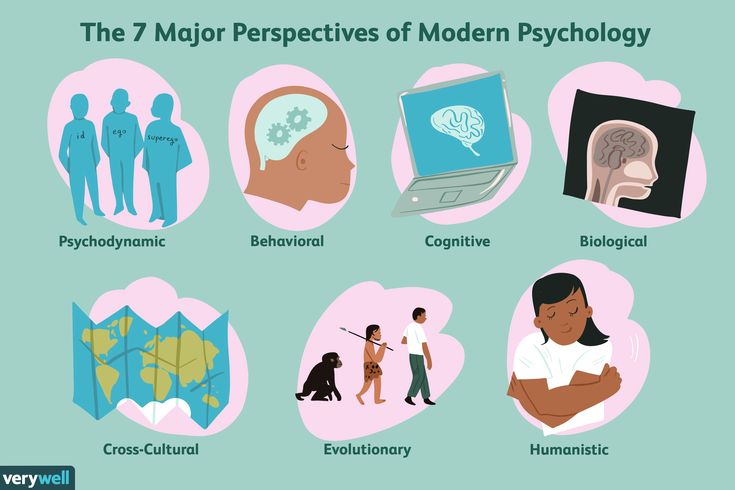 He became world famous for his studies of the phenomenon of learned helplessness, that is, passivity in the face of allegedly irremovable troubles.
He became world famous for his studies of the phenomenon of learned helplessness, that is, passivity in the face of allegedly irremovable troubles.
Seligman proved that the basis of helplessness and its extreme manifestation - depression - is pessimism. The psychologist introduces us to two of his main concepts: the theory of learned helplessness and the concept of explanatory style. They are closely related. The first explains why we become pessimists, and the second explains how to change the way we think from a pessimist to an optimist. published .
Have questions - ask them
And remember, just by changing your consciousness - together we change the world! © econet
It is amazing, but most of the authors of books on child psychology living and writing in our country are unknown to their parents. We read foreign psychologists. Maybe it's a tribute to fashion, or maybe the publishers' marketing policy. Nevertheless, modern Russian psychologists write books for parents.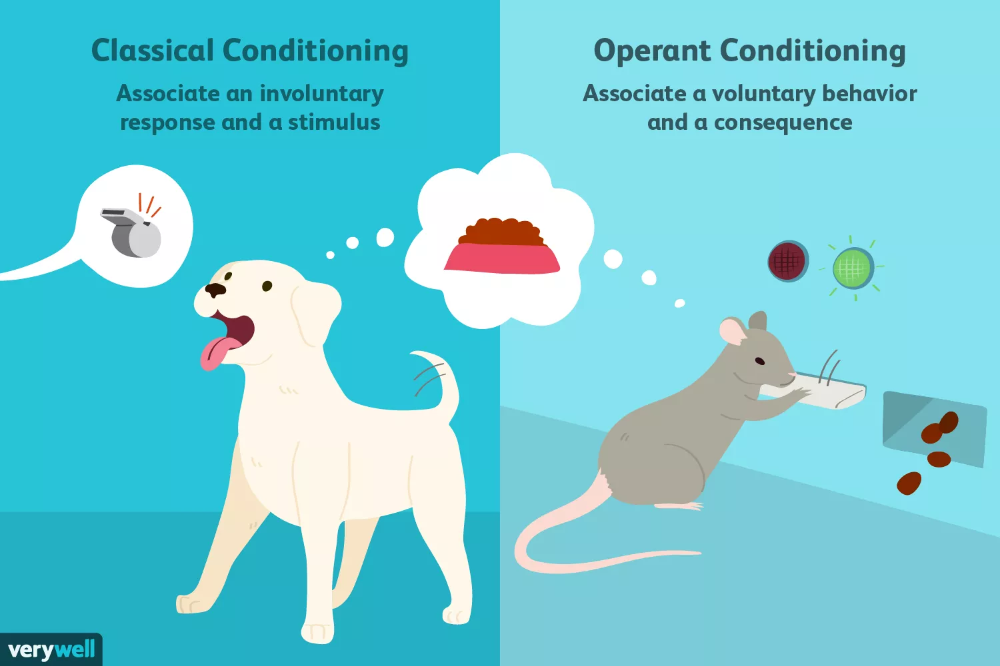 And what books! If you're lost in the maze of parent-child relationships, check out the books in this article. We are sure that many questions will be answered. Website for parents Growing up in Tver presents 10 child psychologists, authors of books on parenting.
And what books! If you're lost in the maze of parent-child relationships, check out the books in this article. We are sure that many questions will be answered. Website for parents Growing up in Tver presents 10 child psychologists, authors of books on parenting.
We limited ourselves to ten authors, but there are, of course, many more. It is Russian psychologists that we recommend in this review, because they know Russian reality firsthand and understand well where the legs of modern problems grow from.
Books on the upbringing of children Gippenreiter Yu.B.
1. Julia Borisovna Gippenreiter is our everything. She is deservedly considered a modern classic in the field of psychology. By the way, she writes not only books for parents, but also textbooks for students. Which is not at all surprising: she is a doctor of psychological sciences, a professor. Currently, he is a professor at the Department of General Psychology, Faculty of Psychology, Moscow State University.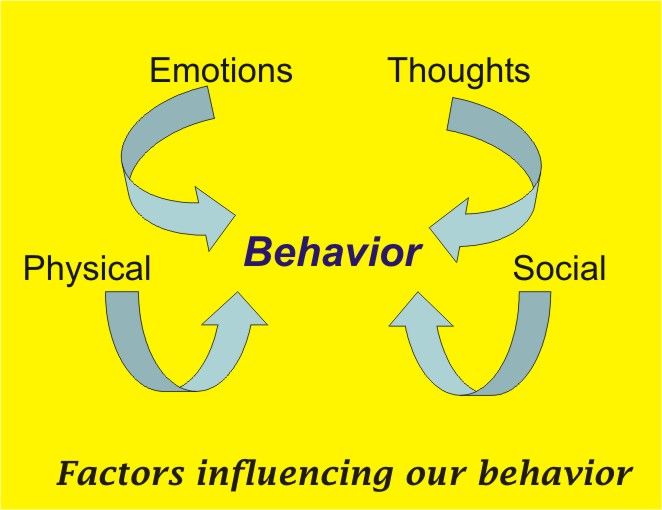 But we are grateful to her for her ability to convey to the heart of every parent the idea that the main tool of education is not a belt, but unconditional love. Books are produced in large numbers, reprinted many times, quotes from them and pocket versions are issued - all this is evidence of her talent as a popularizer of read article.
But we are grateful to her for her ability to convey to the heart of every parent the idea that the main tool of education is not a belt, but unconditional love. Books are produced in large numbers, reprinted many times, quotes from them and pocket versions are issued - all this is evidence of her talent as a popularizer of read article.
Books on child psychology by Irina Mlodik
2. Irina Yuryevna Mlodik – child psychologist, chairman of the association of psychologists-practitioners “Just Together”. Her ironic style of writing books and common sense approach to problem solving captivate readers. By allowing us to be “imperfect parents”, Irina Yuryevna not only won the love of the target audience, but also opened the eyes of many parents to what their children feel. She talks with parents on the most pressing topics: how to tell a child about death, how to teach them to make choices, and many others.
Books:
- A book for imperfect parents
- Introducing a miracle, or non-guide to child psychotherapy
- School and how to survive in it
- While you were trying to become a god .
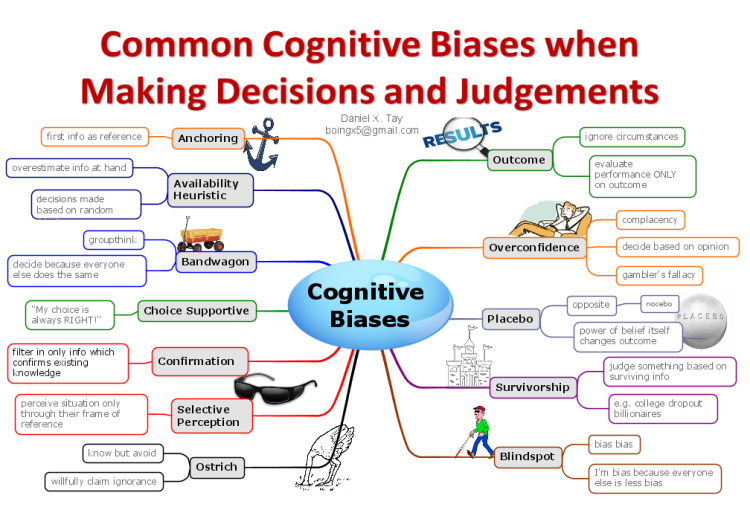 .. The painful path of a narcissist
.. The painful path of a narcissist - Where you are not yet
Nina Nekrasova
3. Nina Nekrasova - teacher, author of methods, more than 35 years of experience working with children. Another author whose books are as easy to read as they are interesting. Live examples, unexpected angles, scientific depth - that's what characterizes her books. Together with her daughter Zaryana, she writes for many women's and family magazines. We are sure that you have read her articles in the magazine "My Child". Books have been translated into other languages. In each of her books, Nina Nekrasova convinces parents that most problems can be avoided if you remember the main tool of education - unconditional love.
Books:
- Stop raising children - help them grow
- Without danger. From birth to school.
- Safe. School years
- How to find contact with a child? Fabulous Opportunities! Phone:
- What you need to live together.
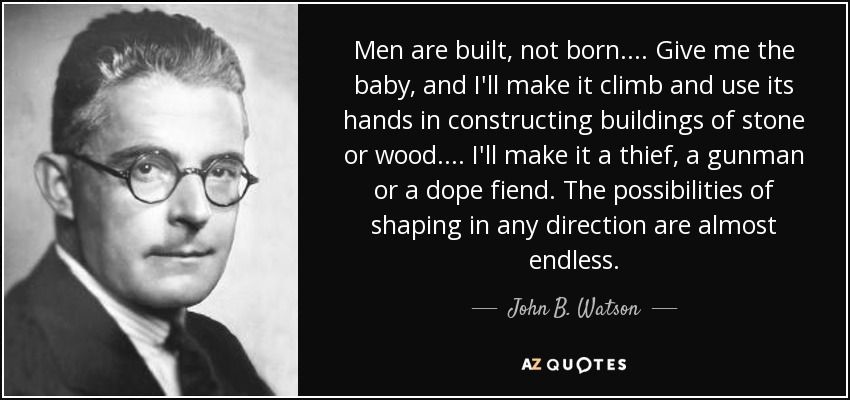 Fun parenting for the whole family
Fun parenting for the whole family - For dad to help. How to teach a man to take care of a baby
Ekaterina Murashova
4. Ekaterina Murashova – family and child psychologist, writer, author of books for teenagers. She worked under the "Doctors of the World" program with children from socially disadvantaged families. Winner of literary awards. He writes a column for Snob magazine. According to her script, the film "Correction Class" about the problems of adolescents was shot.
Books:
- Love or educate?
- Mattress children and disaster children.
- Your incomprehensible child.
- Psychological recipes for parents
Vladimir Levy
5. Vladimir Levy – writer, psychotherapist, candidate of medical sciences, psychologist. The books have been translated into many languages.
Books:
- Non-standard child
- How to raise parents or a new non-standard child
- The art of being yourself
- Kvazhdy kva
- Me and Us
- People are lucky
Alla Barkan
Books:
6.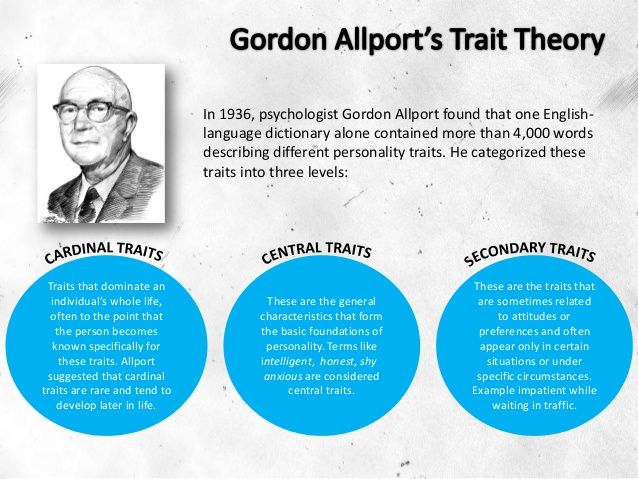 Barkan Alla Isaakovna - pediatrician, MD, Professor of Psychology, Master of Philosophy at the University of Vienna, author of more than 120 articles and 19 books about children.
Barkan Alla Isaakovna - pediatrician, MD, Professor of Psychology, Master of Philosophy at the University of Vienna, author of more than 120 articles and 19 books about children.
- The world through the eyes of a baby. A baby through the eyes of a psychologist
- Bad habits of good children
- Ordinary family wars
Evgeniya Belonoshchenko
7. Evgeniya Belonoshchenko – psychologist, founder of the baby club, organizer of trainings for parents. The book Born with Character is an attempt to systematize the types of children's personalities. The traditional school of psychology talks about temperaments, here it offers a different look at children's characters. After reading this book and finding in it the type of your child, you will definitely better understand him and his actions.
Book
- Born with character
|
|
Olga Vologodskaya
8.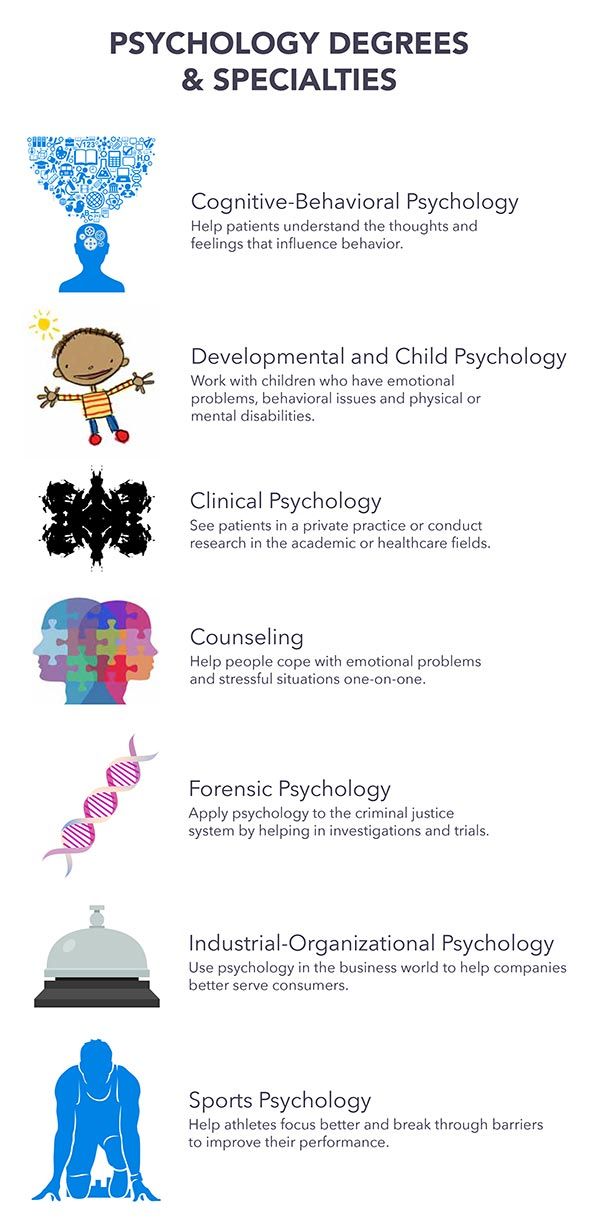 Olga Pavlovna Vologodskaya
Olga Pavlovna Vologodskaya
It turns out that it can be very convenient for parents to maintain lack of independence in their child. And it happens on the contrary, too early parents load their children with independence. What portions to give freedom? Where to begin? How to recognize the danger and teach the child to see these boundaries for himself? This is described in the book of Olga Vologodskaya.
Book:
- Education of independence in children. Mom, can I do it myself?!
Ludmila Strelkova
9. L. P. Strelkova. The Emotional Dictionary is an unusual book. This is a psychological workshop that parents do with their children. Plunging into the stories-situations proposed by the author, one can learn to share the feelings of another. But this is one of the secrets of education. No wonder they say that happiness is when you are understood.
- Emotional primer from Ah to ai-yay-yay
Olga Yurchenko
10. Olga Yurchenko - teacher and psychologist. She raises in her books such topical problems of children's education as laziness and deceit. How to distinguish between manipulation and a cry for help? What is hidden behind childish deception and where does laziness come from? Olga Yurchenko tried to find answers to these and other questions. The books contain a large number of tests and exercises to help you sort out your problems.
Olga Yurchenko - teacher and psychologist. She raises in her books such topical problems of children's education as laziness and deceit. How to distinguish between manipulation and a cry for help? What is hidden behind childish deception and where does laziness come from? Olga Yurchenko tried to find answers to these and other questions. The books contain a large number of tests and exercises to help you sort out your problems.
- The whole truth about children's lies, or What parents of young deceivers need to know
- I don't want to and I won't! How to deal with children's laziness
| |
Behavioral psychology: basics, types, ideas, application
In this article we will look at what behavioral psychology (or behaviorism) is, analyze its distinctive features and get acquainted with the research of the most famous behavioral scientists.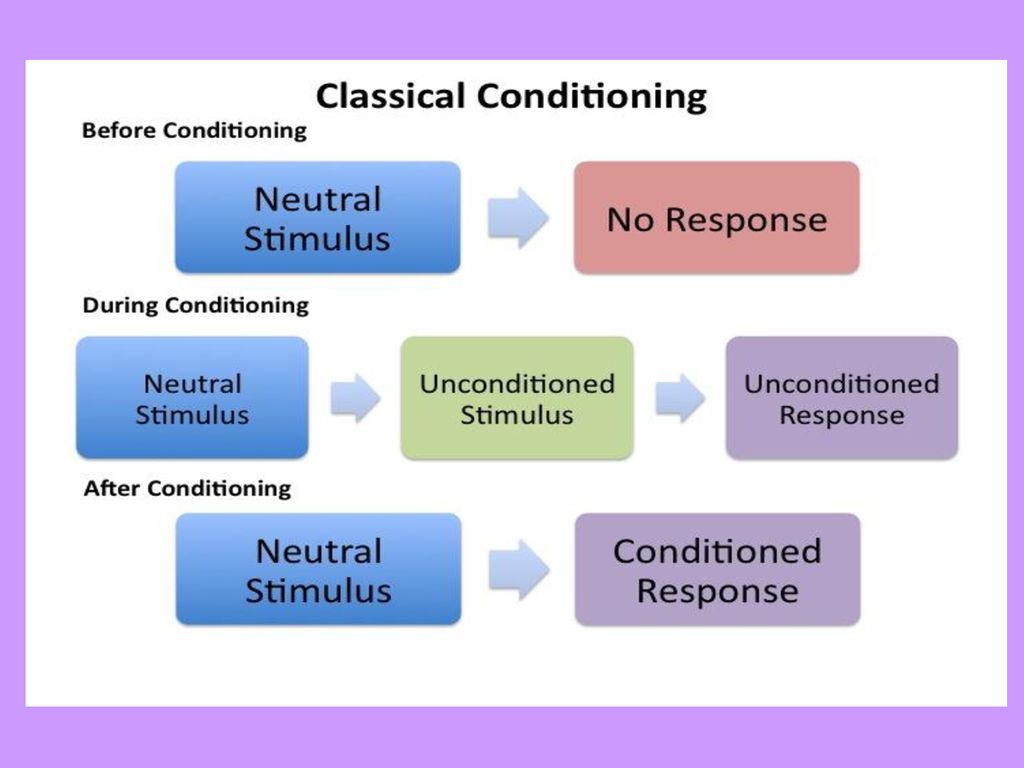
Contents
Behavioral psychology was born in the United States and dominated other areas of psychology in the first half of the 20th century.
JB Watson is considered the founder of behavioral psychology. In his report, published in 1913, he writes that from the point of view of behaviorism, psychology is an objective experimental branch of the natural sciences, and the goal of behaviorism is to predict and control human behavior.
Behavioral Psychology
“Knowing how to achieve control through incentives without resorting to yelling and coercion makes life easier for everyone, educator and student alike.”
Karen Pryor
Introspective psychology, which is considered non-objective, is rejected by behaviorism. Behavioral psychologists believe that objective conclusions can only be drawn by studying observable facts (behavior) that can be measured and quantified.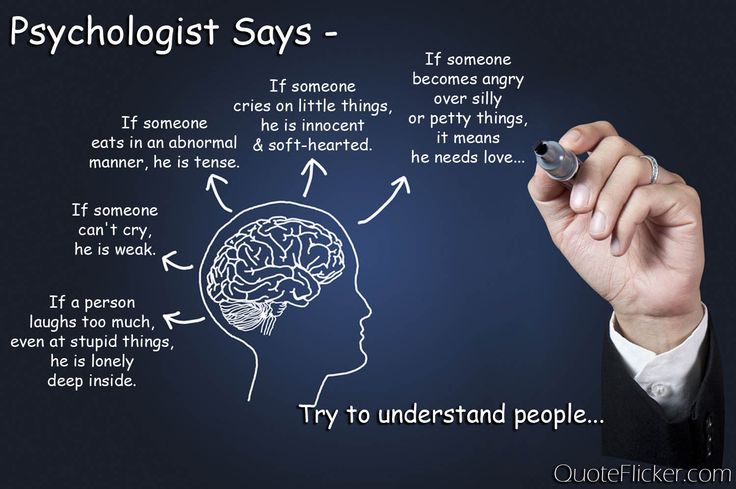
The Goal of Behavioral Psychology
The Behavioral Manifesto, published by JB Watson in 1913, marked a turning point in psychology. Behaviorism became its main focus due to its pragmatism.
The idea of behavioral psychology is to guide and change people's behavior so that they can transform their lives. To implement this ambitious project, you need to know the laws of behavior, predict and control it.
That is, to be able to influence the result, you need to know what causes it.
Behaviorism and animal experimentation
To realize this concept and apply it to the study of human behavior, behavioral psychology uses a method first tested on animals.
EL Thorndike made an enormous contribution to the study of animal behavior. His work still plays an important role, including in the psychology of human behavior.
Thorndike discovered two main phenomena:
- Animals learn only by trial and error;
- In the course of research in all species of animals there is a gradual decrease in undesirable behavior.
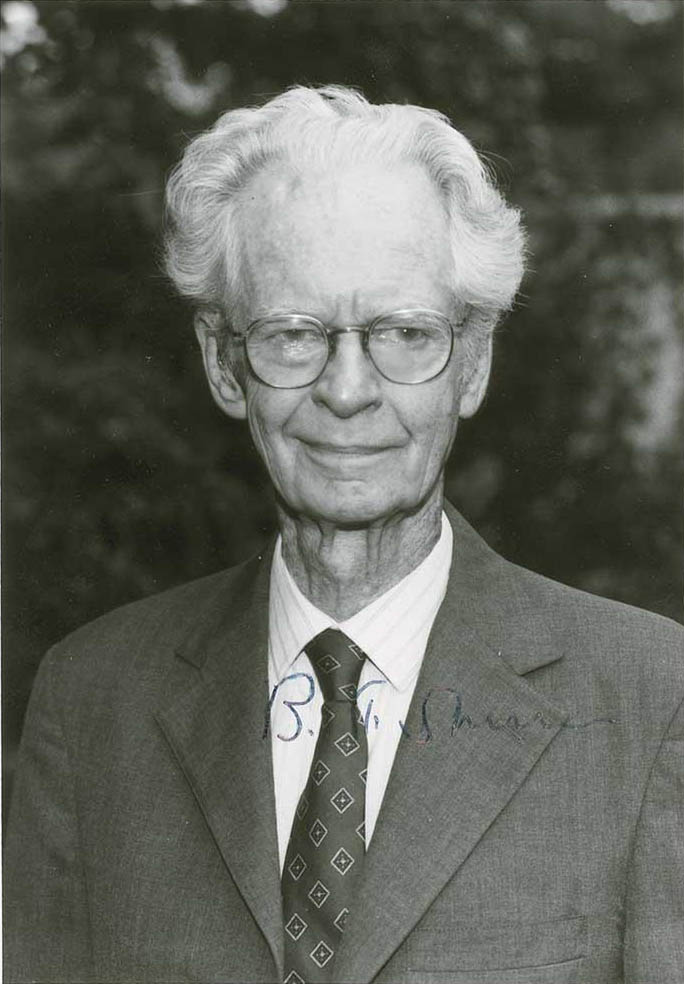 Thorndike deduced the same training schedule every time, no matter what animal was being studied.
Thorndike deduced the same training schedule every time, no matter what animal was being studied.
Later, based on these studies, Watson came to the conclusion that using the methods of studying the psychology of animals, it is possible to create laws that predict and control human behavior.
But the goal of behavioral psychology is not only to control behavior, but also to “create” it.
Pavlov's research
The most high-profile studies on the formation of new behavior were and remain the works of I.P. Pavlova on dog conditioning.
Since 1914, Watson (the founder of behaviorism) began to be interested in the works of I.P. Pavlov on the conditioning of dog reflexes. Indeed, during his work, Pavlov established a whole set of laws on conditioning.
Conditioning is a form of relationship between a stimulus and a reflex (behavior).
It was Pavlov who discovered this phenomenon.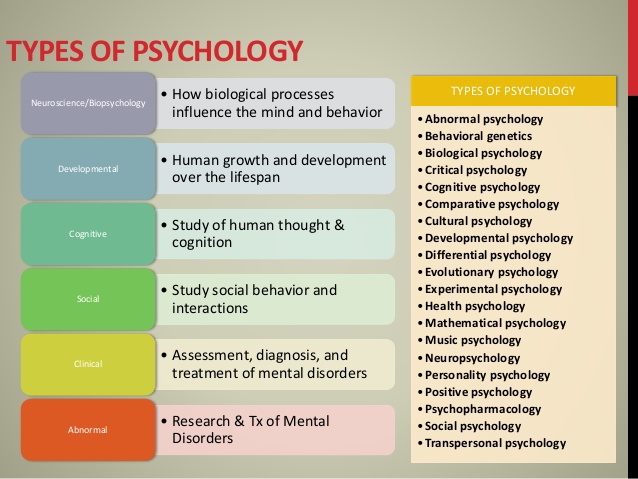 In his research, he noticed that the smell of the food, the sight of the food, or even the sight of the person who usually brought the food, was enough to cause dogs to salivate.
In his research, he noticed that the smell of the food, the sight of the food, or even the sight of the person who usually brought the food, was enough to cause dogs to salivate.
Pavlov called this phenomenon a conditioned reflex (or conditioned response), that is, a reflex that depends on environmental conditions.
Read also on our website:
Ultimately, Pavlov began to consider the conditioned reflex as the basis of all animal learning. After this discovery, Pavlov devoted all his research to the study of conditioned reflexes.
He proved that any stimulus can become a conditioned stimulus (that is, a stimulus that causes a conditioned reflex) if it is associated with an unconditioned stimulus (sound, light, vibration, etc.).
The process by which a neutral stimulus is converted into a conditioned stimulus is called a conditioned response.
Human conditioning
After studying Pavlov's work, JB Watson concluded that studies of animal conditioning provide the key to the study of human behavior.
Watson's idea, like that of all behavioral psychology, is that conditioned reflexes are the basis of human behavior in all life situations.
Examples of human conditioning
To confirm his hypothesis, Watson, together with R. Reiner at 19In 1920, one of the most unethical experiments in the history of psychology was conducted (details here). Researchers tried to instill fear of rats in an 11-month-old baby named Albert.
Research was done: before the experiment, Albert was a rather calm child. In the beginning, Watson and Rayner gave him a white rat to play with. Albert looked delighted and showed no fear.
Convinced that little Albert was not afraid of rats, the researchers began to make loud noises every time they gave a rat to a child. Surprised, Albert began to cry at such moments.
Then Albert began to cry and tremble even at the sight of a rat. Thus the rat, which was a neutral stimulus, became a fear-inducing conditioned stimulus.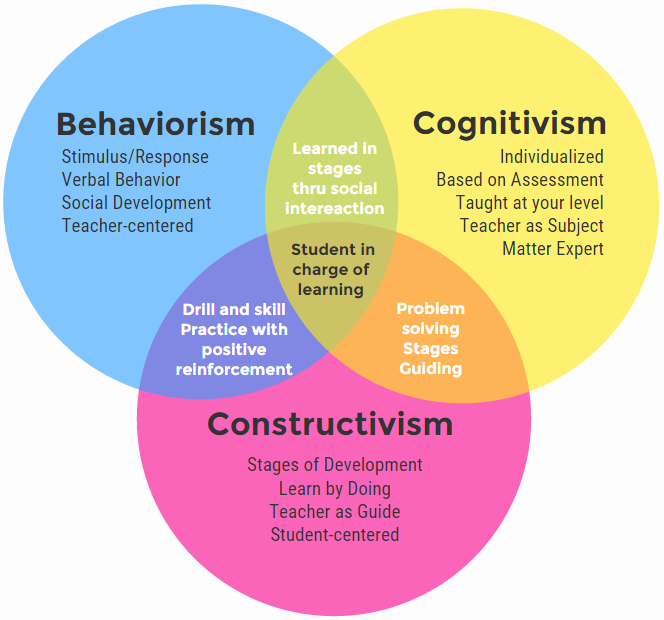
In addition, the fear of the white rat spread to other furry and white objects such as white rabbits, Santa's beard, cotton, etc.
Operant conditioning theory (conditional operations)
In operant conditioning, behavior is determined not only by antecedent stimuli, but also by the various outcomes that accompany it.
Behaviorist BF Skinner laid the foundations of operant conditioning, and he also tried to apply them to complex behaviors.
Operant conditioning takes into account the consequences of actions. This raises a fundamental question: how can behavior be influenced by its outcome?
The first answer is whether the person or animal understands what their behavior can lead to and acts on their values. That is, there is a direct relationship between the result and behavior.
However, this concept is completely opposed to the position of behaviorism, according to which any assumptions about internal states of mind, values or intentions are unscientific.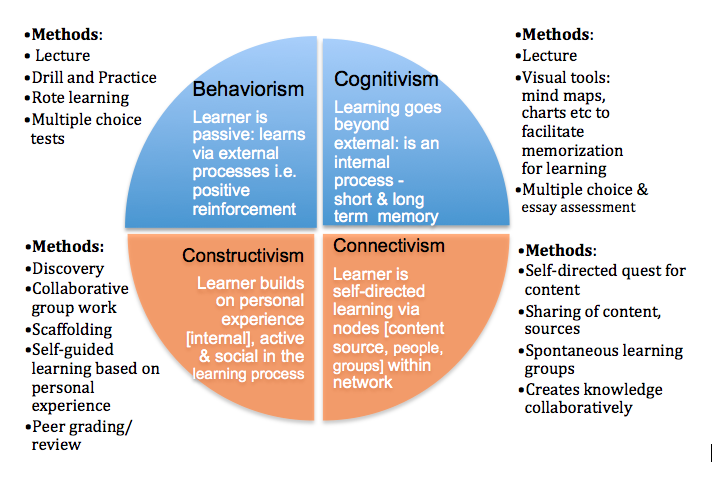
The second option - the result affects the behavior, but indirectly. To learn how, one need only describe the external conditions that cause the behavior and the consequences associated with it.
It is this answer that Skinner takes as the basis for his research.
Differences between a conditioned response and a conditioned operation
There are two main points that clarify the difference between conditioning and operant conditioning:
- When conditioned with an external stimulus, the behavior of animals or people is not accompanied by specific consequences for the environment.
- In operant conditioning, the behavior of humans or animals has an impact on the environment, and it is this that determines whether the behavior will be repeated.
In a conditioned response, behavior is associated with reflexes: it is a response to a specific stimulus. In operant conditioning, responses to stimuli are seen not as reflexes, but as complex behaviors.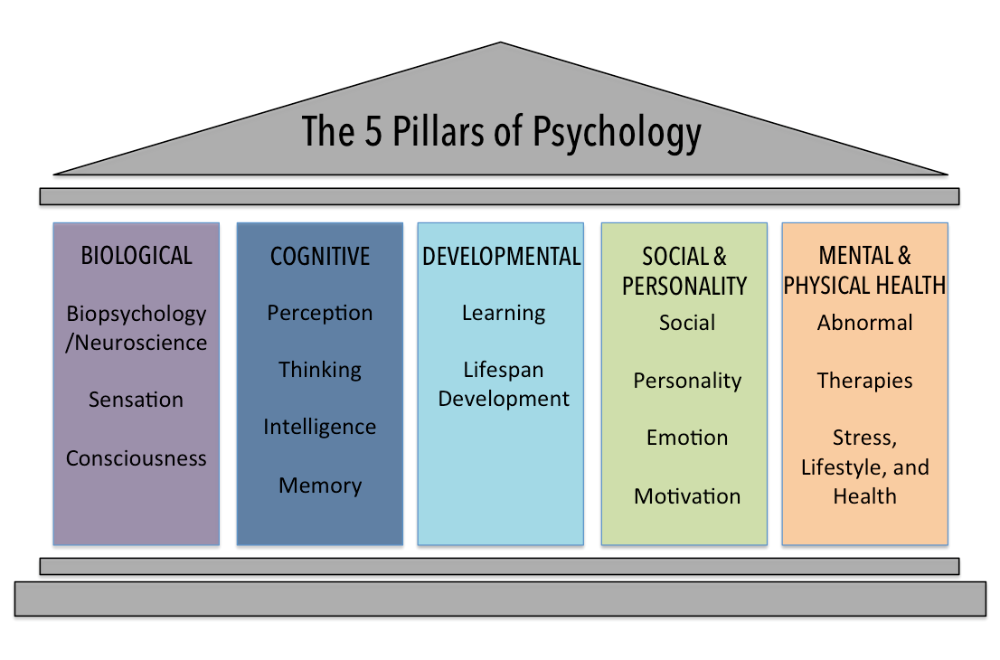
Operant conditioning in education
Having laid the foundations of operant conditioning, behaviorist B.F. Skinner began applying them to education and therapy in the 1960s.
According to Skinner, the goal of any education is to create new forms of behavior in the student. Thus, learning is nothing more than creating the conditions in which students find themselves. This principle is called “ programmable learning ”.
Programmed learning requires setting an educational goal (desired behavior) and determining the steps to be followed (pedagogical development) to achieve it.
Skinner advocated an education system that meets the following criteria:
- Continuous interaction between the student and the discipline taught;
- Teaching only that part of the discipline that is closest to the student's current abilities;
- Teaching must correspond to the abilities of the student and necessarily lead to an increase in knowledge;
- The student must be actively interested in the discipline and see their results in its study;
- The possibility of learning errors should be minimized.
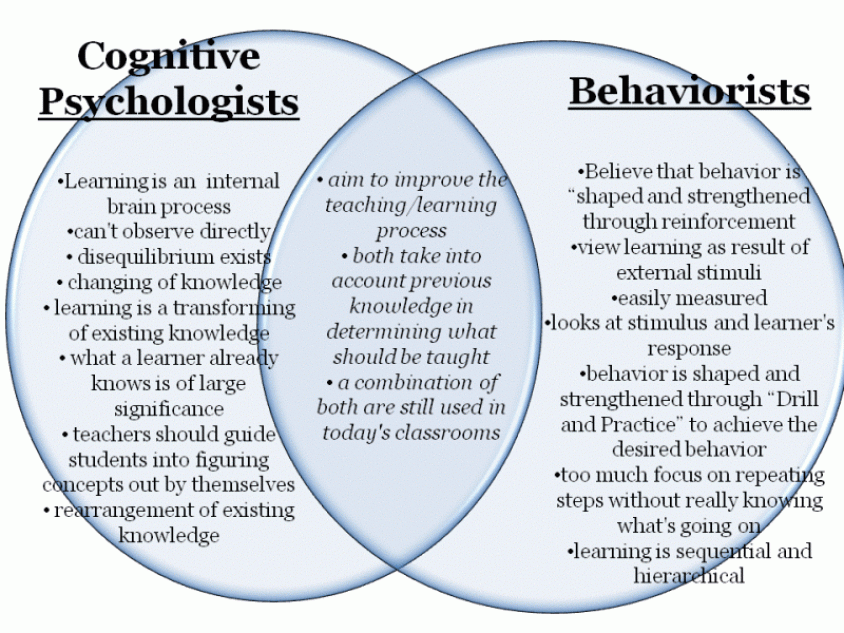
To meet these criteria scrupulously, Skinner developed a "teaching machine" that is, in a sense, the progenitor of educational software in use today.
However, Skinner's enthusiasm for a new educational system met with cultural resistance and his program was challenged.
Operant conditioning in therapy
In addition to the educational area B.F. Skinner developed conditioning programs in the field of therapy.
Prior to Skinner, behavioral therapy was based on classical decontamination procedures developed from Pavlov's work.
Skinner suggested replacing these procedures with therapeutic methods based on operant conditioning. It is about replacing unwanted behavior with desirable behavior through the intervention of a therapist.
Unwanted behavior modification can also be performed by the patient himself. This type of behavioral therapy requires good self-control. It involves teaching the patient to control the stimuli associated with the problem behavior.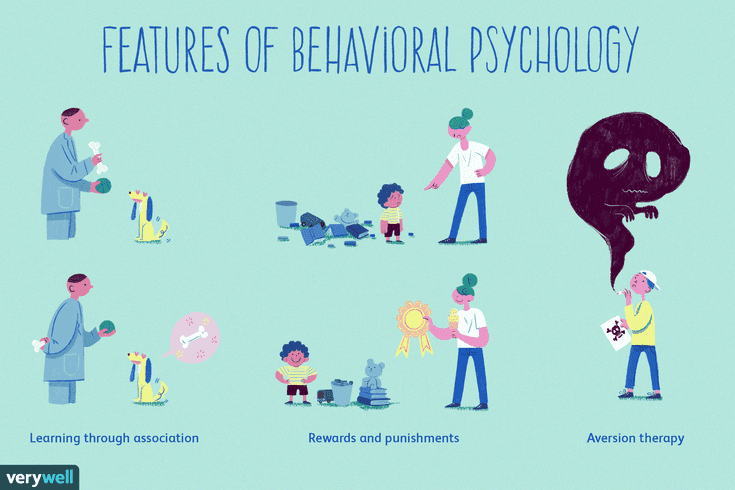
Personality in behaviorism
One of the main misconceptions is that supposedly behavioral psychology denies the existence of human consciousness and opposes the study of thought.
But this is not true: although Watson (the founder of behaviorism) objected to the study of internal psychological phenomena, Skinner (by far the most famous behaviorist) argued that they could be studied and investigated. Simply, according to Skinner, these internal processes are too difficult to observe, so he did not take them into account in his studies.
Skinner suggested that people cannot control their behavior. He argued that behavior depends only on the environment.
Skinner explicitly advocated determinism and refused to attribute the achievements of people to their qualities or mental processes (although he recognized them), such as motivation, thinking, goal setting, etc.
Skinner himself writes about himself in his biography published in 1983: “As far as I know, my behavior at any given time was nothing more than the result of my genetic background, personal history and environmental conditions. ”
”
Behaviorism in everyday life
Conditioning can be seen in many areas of life, from schools to mental hospitals, from the sports world to prisons.
When the ideas of behaviorism are used in the natural environment, we can talk about a natural change in behavior.
Examples of behavior change
The goal of behavior change is to replace destructive behavior with more productive one.
Below are some of the effects of applying positive psychology methods. Behaviorism - real life examples:
Speech correction
Behavioral psychology allows children with autism who do not speak at all to develop a vocabulary of several hundred words. The same applies to people who have suffered brain damage.
Independence
Behavioral direction in psychology helps adults with intellectual disabilities to communicate with others and be more independent.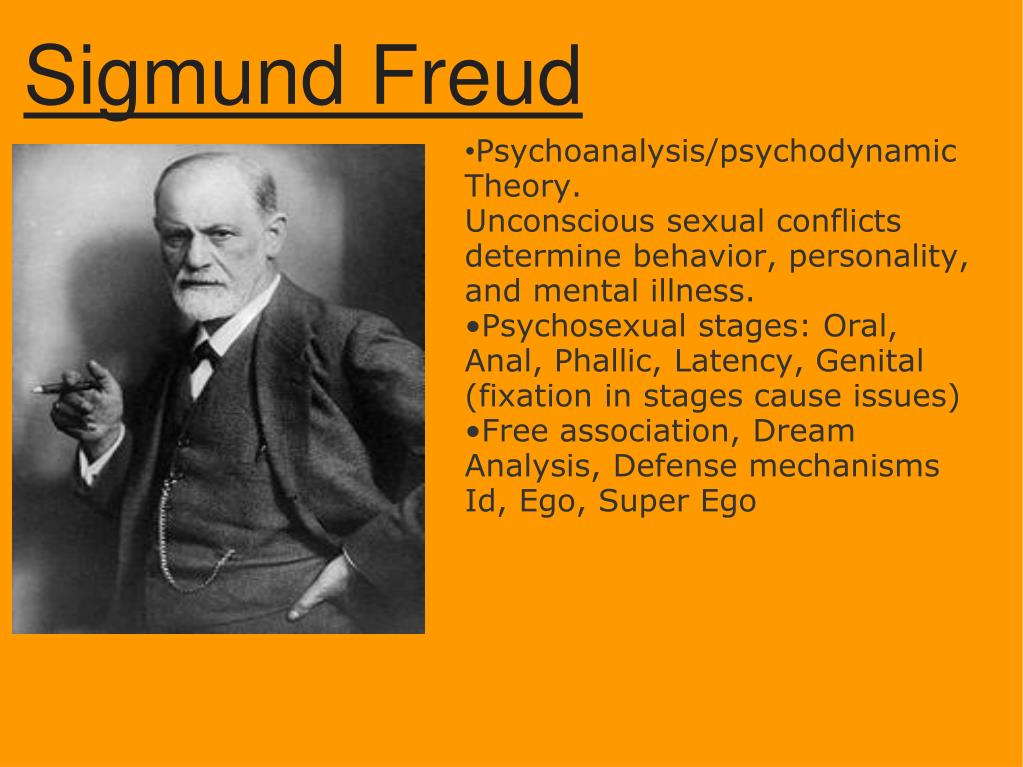 This allows them to develop social skills, perform daily tasks, and even keep a good job.
This allows them to develop social skills, perform daily tasks, and even keep a good job.
Teaching children
The principle of behavior change is very often used in raising children. Potty training is a good example.
Teaching music or sports
The acquisition of new skills is carried out through the repetition of certain actions.
Getting rid of unwanted behavior
Behavioral psychology effectively helps to get rid of bad habits.
Formation of new behavior
Most of the examples mentioned above relate to the study of “complex” behavior, that is, actions that cannot occur spontaneously (play the piano, speak, etc.) for this type of behavior learning is carried out by forming new skills and habits.
The results of such training are excellent and sometimes very surprising. For example, B. F. Skinner, the originator of this method, was able to teach pigeons to play ping-pong with their beaks!
More seriously: behavioral psychology is commonly used to train guide dogs, to teach children about cleanliness and how to communicate with peers, and so on.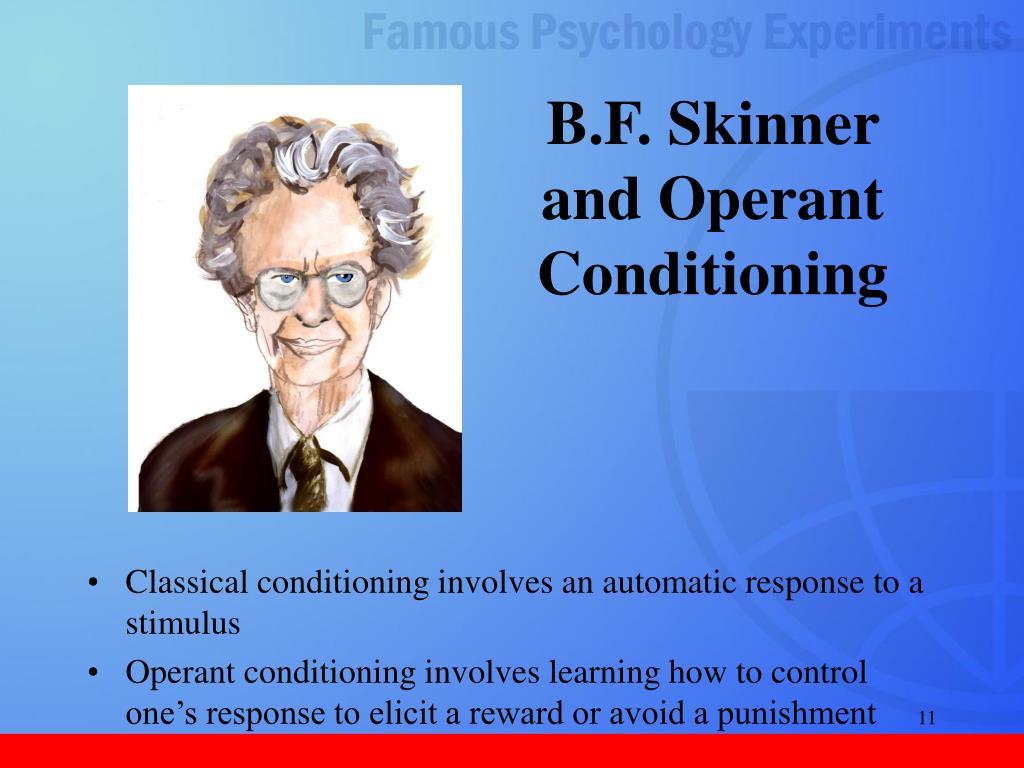
Punishment and Behavioral Psychology
If conditioning can be effective in changing or shaping new behavior, can it also be used to aggressively suppress unwanted behavior?
Sometimes, depending on the circumstances, support alone is not enough and punishment is also necessary. For example, if a child beats one of his comrades, or if he climbs where he does not need to (gas stove, washing machine).
In these cases, punishment can be effective. However, the reprimand must be issued immediately (sometimes a simple "no!" may be sufficient).
When can punishment be harmful?
A harsh reprimand can have negative consequences if it is too harsh or unjustified. Here are the main risks associated with punishment:
- No connection with good behavior.
Punishment makes the punished person realize that his behavior is inappropriate. But if there are no clear rules for how to behave, then punishment does not lead to the formation of better behavior.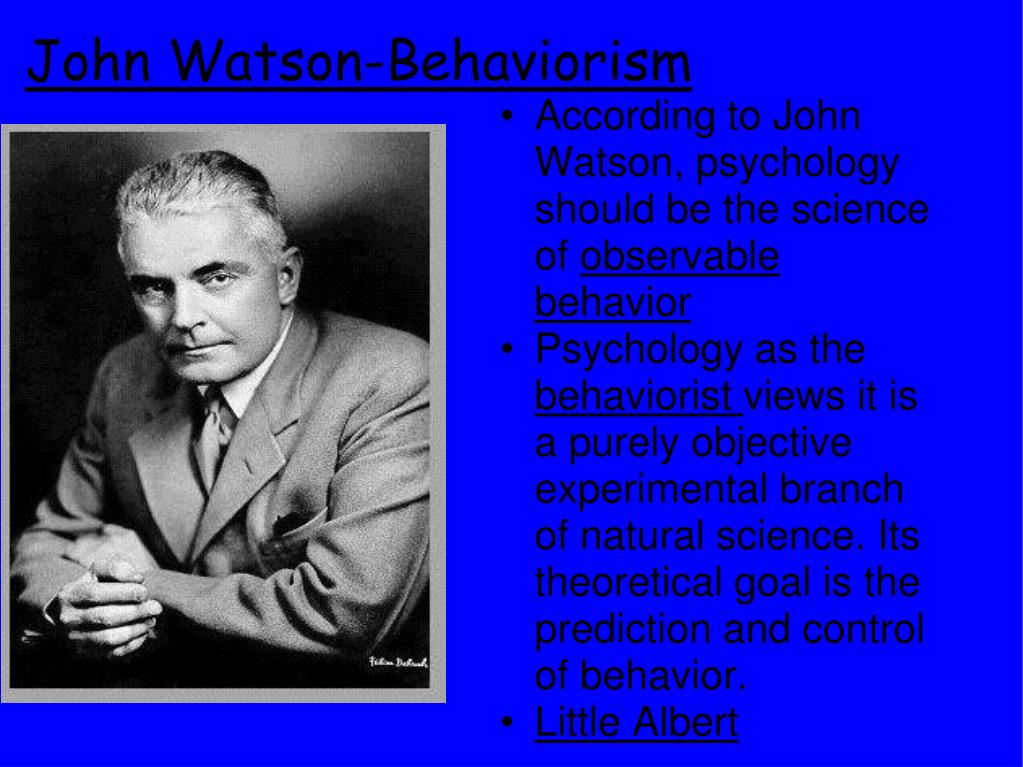
- Temporary effect.
The consequences of a reprimand are often short-lived and highly dependent on the person giving the punishment.
- Negative emotions of a person being punished.
A person who has been reprimanded may react with fear or anger. He may begin to fear or even hate the person who punished him, or the place where he was punished.
- Delay between action and reprimand.
If the punishment does not immediately follow the objectionable behavior, it will not be useful. In everyday life it is often difficult to react instantly.
Thus, the separation between the positive and negative consequences of punishment is rather fragile.
This fuels the debate about parenting practices: Should we punish them?
Perspectives in Behavioral Psychology
The behavioral approach in psychology assumes that all people have the same potential, and only differences in the environment contribute to the development of unique personality traits.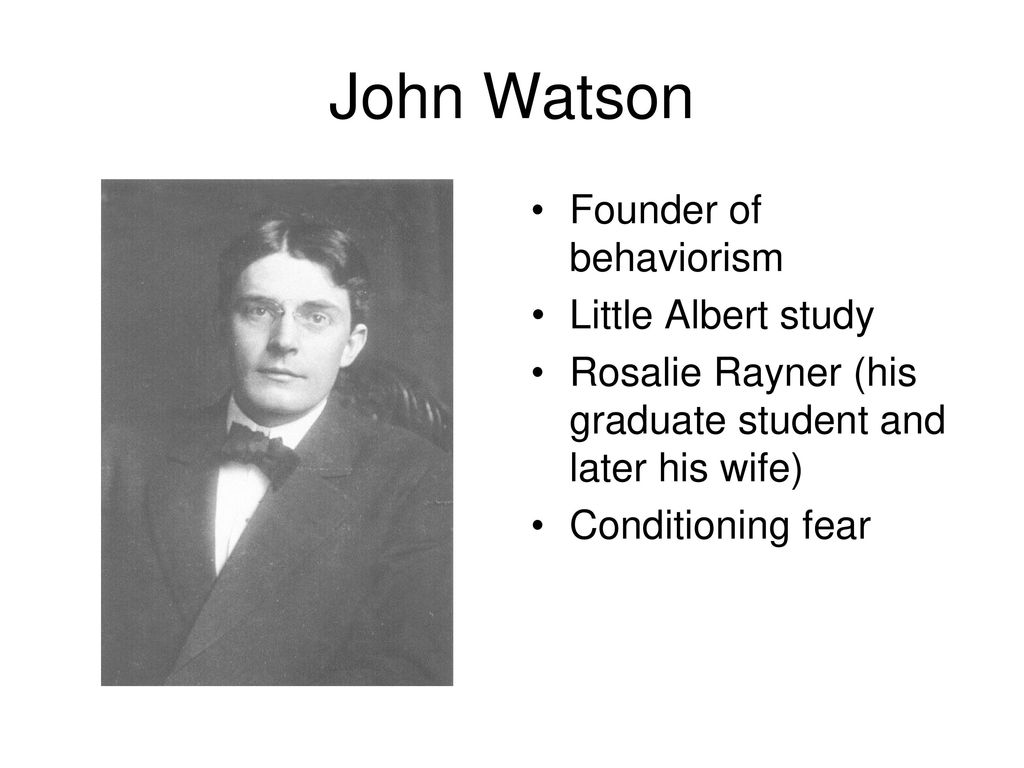
Although the idea that "we are the result of conditioning" seems rather pessimistic, for behaviorists this position opens up promising educational and therapeutic perspectives.
If a person depends solely on the environment, then by changing this environment, one can radically influence his life. Changes in the environment would make it possible to change human behavior and even prevent the formation of bad habits or the development of mental illness.
Behavioral psychology - books
We offer you a list of 4 books that reveal the phenomenon of human behavior.
1. “Coping behavior. Current state and prospects” – team of authors.
The book is addressed to a wide range of specialists interested in the adaptive capabilities of a person faced with difficult life situations.
Buy and download
2. “How to find the key to solving any situation.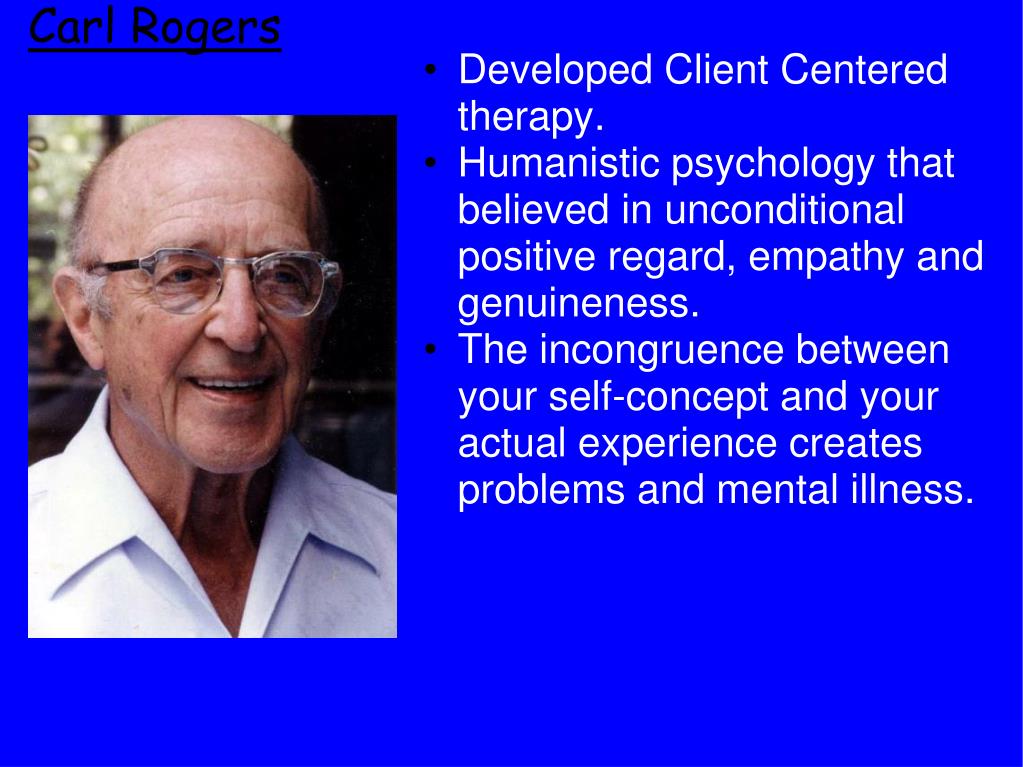 30 rules for effective communication, conflict resolution, behavior management” – Larisa Bolshakova.
30 rules for effective communication, conflict resolution, behavior management” – Larisa Bolshakova.
This book contains thirty new psychological tricks. How to avoid a conflict situation and find a compromise? How to find a key to any person? What can be done to overcome aggression? And much more!
Buy and download
3. “Organizational Behavior” – Lyudmila Zgonnik.
The book deals with the essence of organizational behavior, various aspects of managing the behavior of a person and groups in an organization.
Buy and download
4. “The power of habit. Why do we live and work this way and not otherwise” – Charles Dahhig.
Duhigg's observations and discoveries in many ways complement and develop the ideas of Nobel Prize winner in economics Daniel Kahneman, author of the bestselling book Think Slowly... Decide Fast.
The book is recommended for reading to everyone who works on himself and wants to change his life!
Buy and download
Conclusion
So, we have reviewed the basics of behavioral psychology and met in absentia with the most prominent scientists in this field of psychological science.